Click on the button to load the content from www.googletagmanager.com.
Load content

- Tailored Vacation Planner
- Cabin Yacht Charter
- Family Sailing Holidays
- Romantic Sailing Vacations For Couples
- Sailing with friends
- Greece all inclusive yacht charter
- Croatia all inclusive yacht charter
- Food & Wine Routes
- Yacht search
- Luxury sailing

Boat vs. Ship vs Yacht: What’s the Difference?
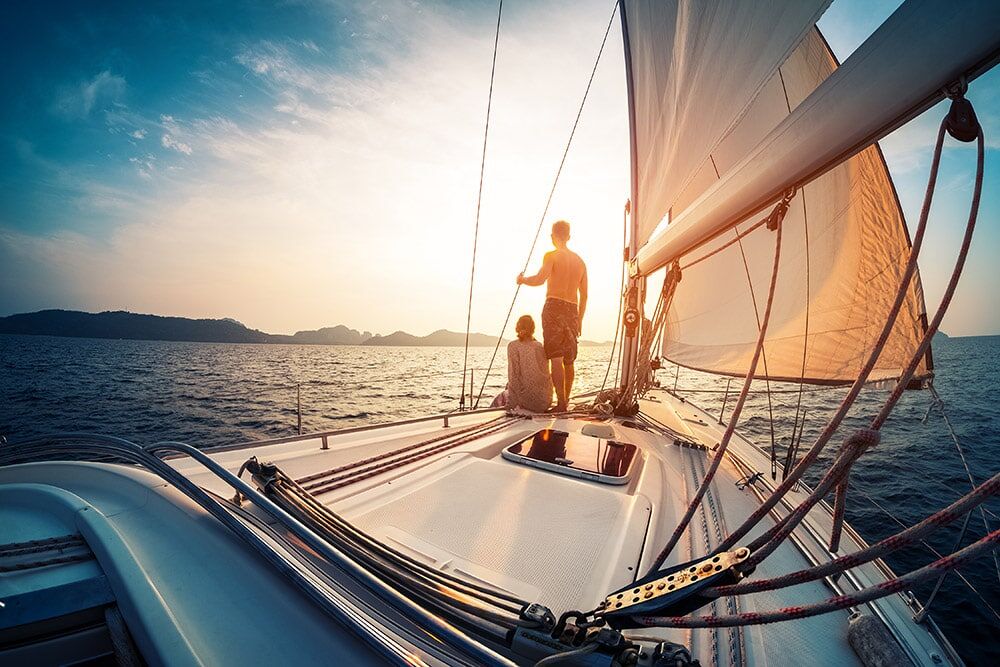
Language is a tricky thing, and picking out the differences between similar terms can be confusing. This is especially true when some of the definitions overlap. This is the case with the case of boat vs. ship vs. yacht . What’s the difference? We know in our gut that there are differences between these three seafaring vessels, but unless you’re a harbor master do you really know what counts as what?
Let’s get into some definitions, and we’re going to start with the easiest to explain: What is a yacht? What is a ship? And what is a boat?
Yacht vs. Ship vs. Boat
What is a yacht.
A yacht, I think everyone would agree, is fancier than a ship or a boat. “Yacht” infers some amount of luxury , and definitely recreation. There’s also something to be said about size. A yacht tends to be anywhere between 35 feet up to 160 feet. And some yachts, known as superyachts, go even beyond that. (Jeff Bezos just built a 417 foot yacht, but that’s really breaking yacht records.)
Because of the size, yachts tend to operate in larger bodies of water–generally the ocean. Yachts are able to handle rougher ocean waves, and they are also equipped with more advanced navigation and guidance instruments than smaller boats. Likewise, a yacht tends to have a full crew to help with the navigation, engineering, repairs, as well as having stewards that serve the yacht’s guests. This can be anywhere from a crew of four or five up to a crew of a few dozen on large yachts.
One interesting thing to note is that outside of the United States, a yacht refers to a sailboat , and a motorized yacht is called a “motor yacht”.
So, is a yacht a boat? Yes, technically a yacht is a boat. But a yacht is a very specific kind of boat.
Want to hop aboard?
Book your dream sailing vacation in top sailing destinations!
- Explore your charter options
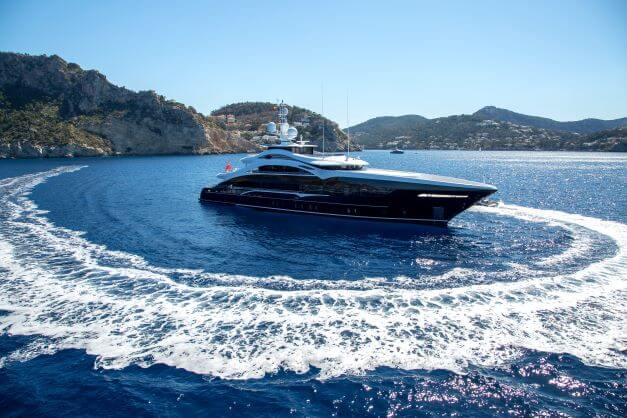
What is a Ship?
The term ship is most commonly associated with a very large boat, and something that is not as fancy as a yacht (one exception is that cruise ships can still be very fancy, but are referred to as ships because of their size and power.)
Ships are generally so large that they would never be found in a lake, with some exceptions for the Great Lakes, and are made for navigating the high seas of the open ocean. An ship can refer to a cruise ship, a naval ship, a tanker, a container ship, and many other commercial vessels.
Ships tend to have advanced navigation and technology, but much more advanced than that of a yacht due to the size, the speed, and the routes that a ship will take. They are meant to be traversing the open ocean for very long periods of time, from one continent to the next, while a yacht may only rarely set across the ocean and most often stays somewhat near land.
A ship will also have a much larger crew than a yacht or a boat. Ships are typically so large that they need not only one trained navigator but a set of navigators, plus an entire engineering team, and includes many more positions.
Finally, a ship is meant to carry things. This may be passengers, yes (in reference to cruise ships and some navy ships) but most ships are for carrying cargo–or even carrying equipment to do work on other ships including repair work or refueling.
What is a Boat?
Well, a boat is harder to define, because a yacht is technically a boat, and a ship is technically a boat. But when people refer to boats, they are almost always referring to something smaller than either a yacht or a ship. Boats may be motorized, like a speed boat, or they may sail, or they may be man-powered, like a rowboat or a kayak. Really, anything up to and including a liferaft, can be called a boat.
(As a side note that will just muddy the waters even further, submarine captains are adamant that their subs are boats. They are not ships.)
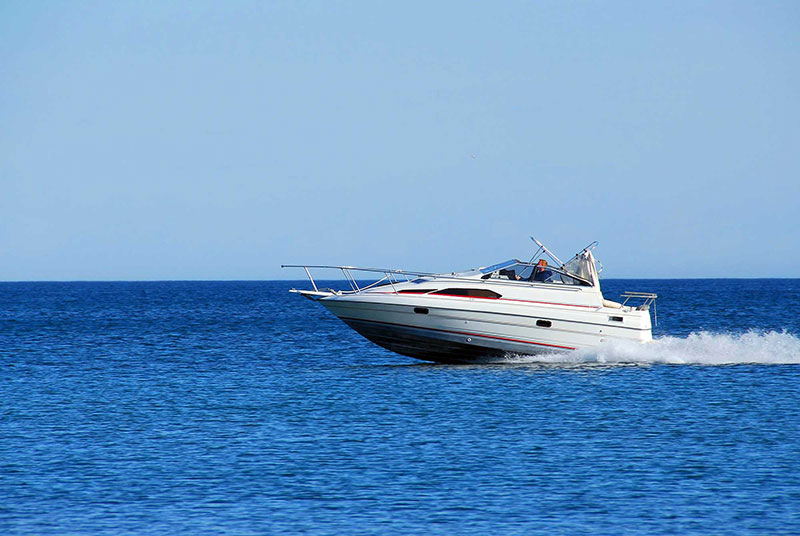
So, Boat vs. Ship Vs. Yacht?
Ultimately it comes down to this: all three of them are boats, but yachts are fancier, larger, and used for recreation, and ships are even larger, used commercially or by the navy, and are meant to cross oceans. The dividing line is sometimes thin, but generally speaking, when it comes to boats vs. ships.vs. yachts you can go by the adage “ I know it when I see it .”
Share article:
Have a question.
We have answers to your questions. So don’t hesitate to get in touch with our team today!
- GET MORE INFO
Feel free to ask us anything. All hands on deck. Let's sail
Thank you for sending us an inquiry, thank you so much for your enquiry.
Boat vs. ship: What's the difference? The annoying mistake some cruisers keep making

Vacationing on a cruise ship? That's great, but for the love of all that is nautical, please don't call it a boat.
Modern-day cruise behemoths have earned the right to be called ships. The name is grand, it implies stature, and it lets everyone know that there's some sort of official larger purpose, whether it's the transportation of goods or of people.
What's the official difference between a boat and a ship? Technically, there isn't one that's universally accepted. Everyone seems to have their own ideas about what defines each, with no final verdict. Some say it has to do with size or tonnage, while others argue it's about how many masts the vessel has or whether it's a submarine (which, I'm told, is always a boat). Still others claim it's more about the bodies of water on which a vessel is designed to spend its days.
Regardless, the one certainty is that you'll sound like you have no idea what you're talking about if you refer to a cruise vessel — except maybe a riverboat — as a boat instead of a ship. In that vein, to help you understand the differences, let's take a look at some of the most popular differentiators, depending on whom you ask.
For cruise news, reviews and tips, sign up for TPG's cruise newsletter .
Vessel size
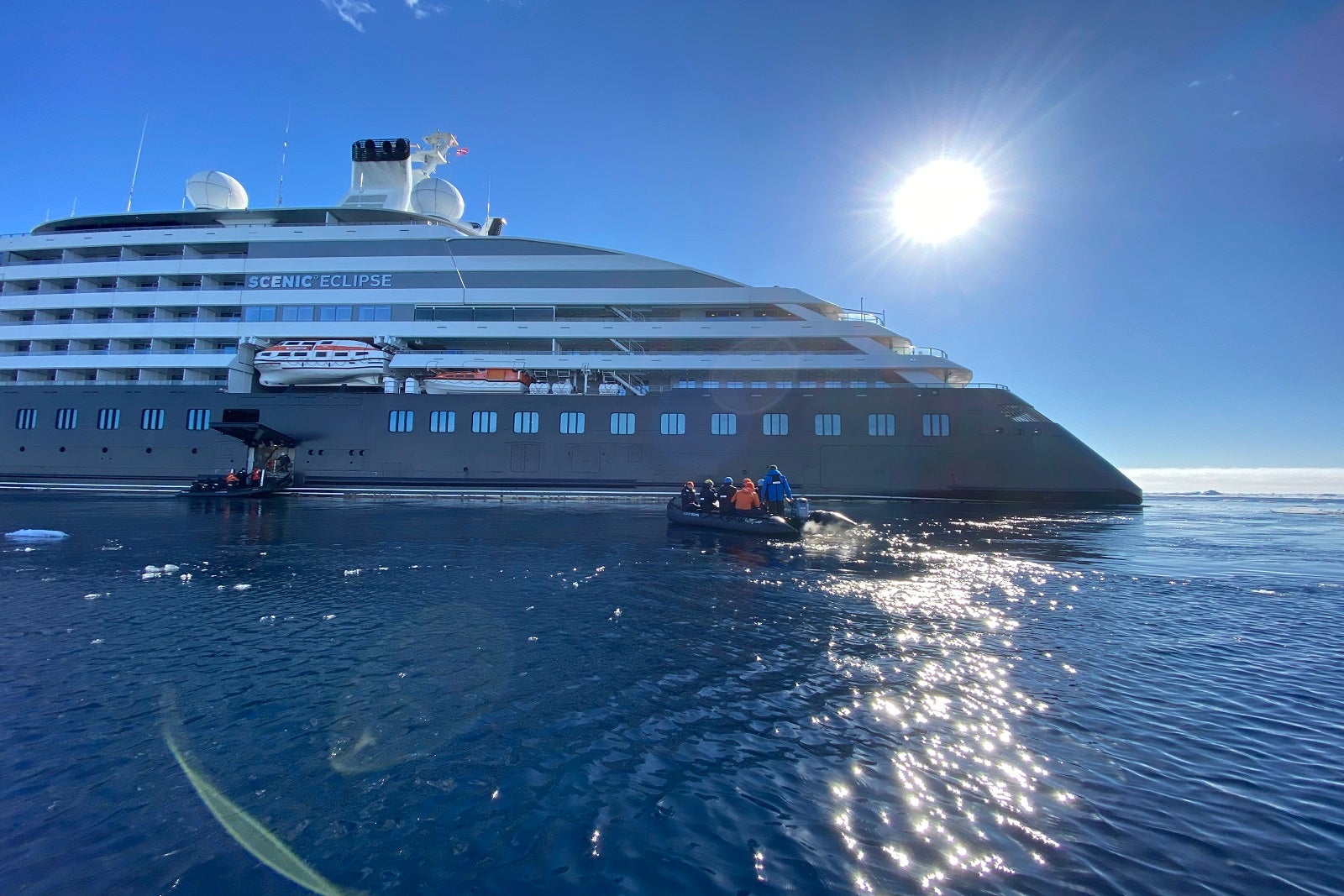
When you ask the average person what makes a vessel a ship versus a boat, they'll often tell you that it comes down to size. A ship is big; a boat is small. That seems to be the most common consensus, but those terms are arbitrary. What constitutes large and small?
In researching, I've discovered there's no official length at which a vessel becomes a ship. Sources cite everything from 100 feet to 200 feet in length and everything in between.
In terms of height, some seafarers insist that any vessel with more than one deck is a ship, and anything with only a single deck is a boat, as presented by The Guardian via a reader in the paper's Semantic Enigmas section.
Another common size-related refrain — one that's used by the United States Naval Institute — is that if a vessel is large enough to carry other vessels, it's a ship.
"In general, a boat is a watercraft ... that is small enough to be carried on board a larger one, and that larger one is a ship," said Lt. Cmdr. Thomas J. Cutler in a blog post on the USNI's website . "This is sometimes expressed this way: 'A ship can carry a boat, but a boat can never carry a ship.'"
Vessel tonnage
Tonnage is another determinant some entities use to qualify vessels as ships instead of boats. In fact, the maritime information website Marine Insight claims it's one of the most important factors to consider.
Vessels of more than 500 tons, regardless of size, are ships, according to the site.
Where the vessel sails
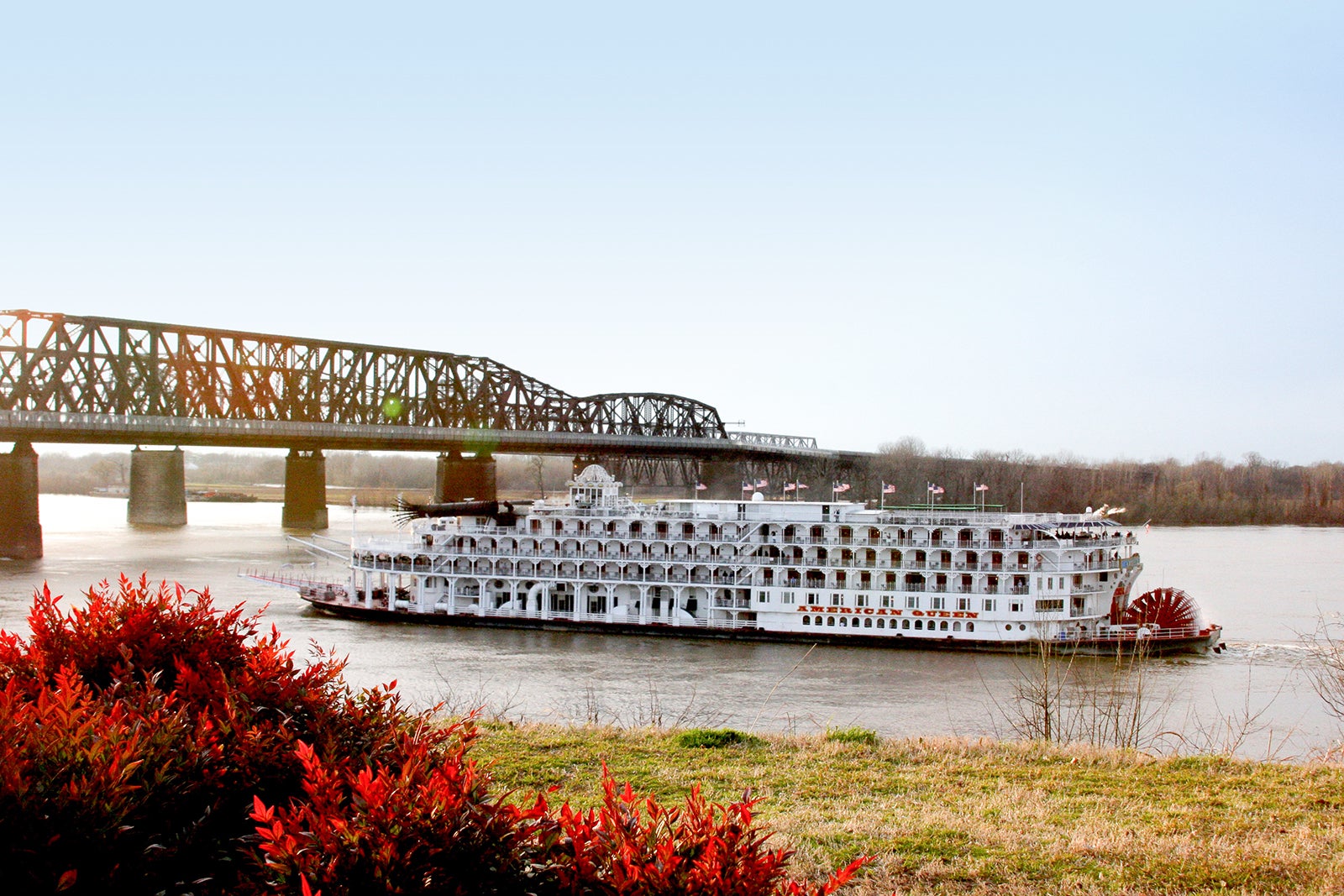
I recently sailed on my first U.S. river cruise, during which a lecturer explained that boats are specifically built for inland waterways, such as lakes and rivers. "This is a boat, despite its size," she said, also noting that it carries lifeboats (which would make it a ship by some definitions).
Supporting this theory is Scientific American , which quotes The Straight Dope (Cecil Adams, the self-proclaimed smartest man in the world) as saying, "With regard to motorized craft, a ship is a large vessel intended for oceangoing or at least deep-water transport, and a boat is anything else."
How the vessel corners
A handful of online query results say another way to tell a ship from a boat is by observing the direction in which it leans when it turns.
"A U.S. Navy rule of thumb is that ships lean towards the outside of a sharp turn, while boats lean towards the inside," The Maritime Post said. For a more relatable visual, think about a motorcycle versus a car. The former leans in as you go around a turn; the latter leans away from the center of the turn.
Vessel propulsion and design
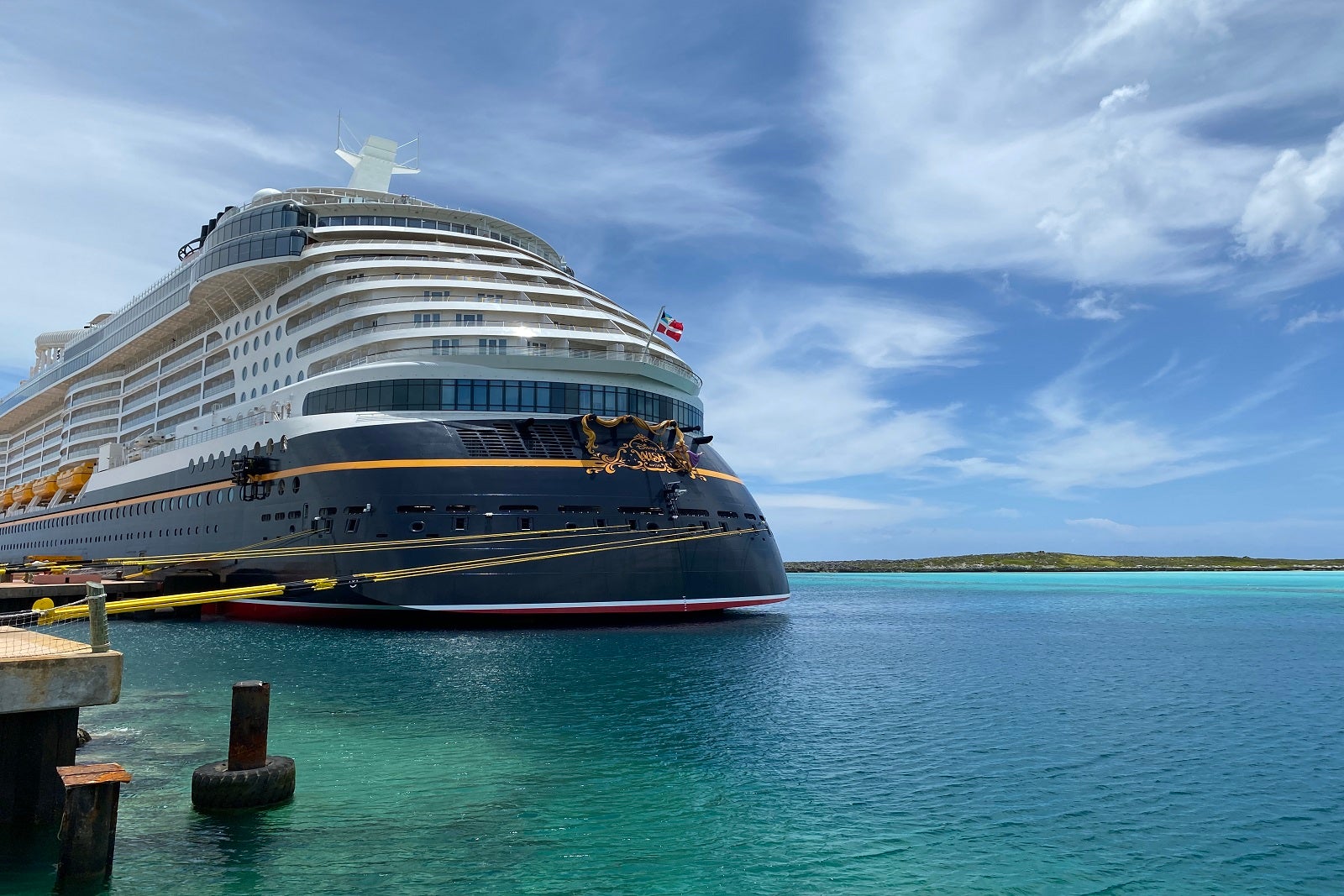
As you might expect from a larger vessel, ships often have more complex construction than boats. They also have more machinery on board than boats do, whether that's in the way of navigation or engine room accouterments.
Further, how they're propelled might differ. Most modern-day ships are powered by engines, whereas boats can be moved by anything from oars or sails to engines, according to Marine Insight .
Number of masts on the vessel
In terms of sailing vessels, if a rig has three masts or more, it's considered a ship, per the New Bedford Whaling Museum in Massachusetts. To qualify, it must also have square sails on all masts.
Obviously, most modern-day cruise ships don't have masts. (Exceptions are ships from Windstar and Star Clippers.) Although this rule is less relevant today, it does come up frequently in maritime circles when discussing the difference between a ship and a boat.
Bottom line
There's no hard-and-fast rule when it comes to determining whether a vessel is a ship or a boat. Generally, the most common ideas about this seem to revolve around size: tonnage, number of decks or whether or not the vessel can carry other boats.
Lots of people will have opinions about the "correct" criteria, but the bottom line is that you should never refer to a cruise ship as a boat if it carries travelers on the ocean for vacation.
Got more cruise questions? TPG has answers:
- Man overboard: Why do people fall off cruise ships?
- What is baked Alaska, and why is it paraded around cruise ships?
- What are the largest cruise ships in the world?
- What is a lido deck on a cruise ship?
- What is tendering on a cruise ship?
- What's the difference between a cruise concierge and a butler?
- What is a gentleman host on a cruise?
- What is the Jones Act and how does it affect cruise ships?
- What's a cruise cabin guarantee and will it save you money?
Yacht vs. Ship: What's the Difference?
Key Differences
Comparison chart, primary use, crew requirements, design focus, yacht and ship definitions, what is a yacht primarily used for, why are ships essential for global trade, how does a ship differ from a yacht in terms of size, is every luxury boat considered a yacht, how are ships powered, can a ship be used for leisure, is yacht racing a popular sport, how are ships navigated, can yachts cross oceans like ships, what type of crew does a yacht require, why are ships crucial for naval defense, how is the speed of yachts compared to ships, are ships and yachts subject to maritime laws, do yachts have classifications, what's the largest type of yacht, can ships be privately owned like yachts, how long can ships stay at sea, what amenities can be found on luxury yachts, can yachts be chartered, how are ships built to withstand rough seas.

Trending Comparisons

Popular Comparisons

New Comparisons

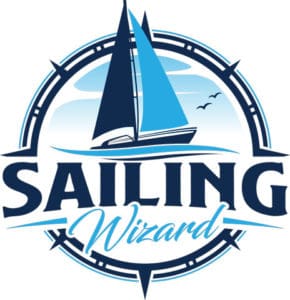
What’s the Difference Between a Boat, Yacht & Ship?
Whether you are a brand new sailor or just wanting to brush up on some terms, it is essential to know what to call a particular watercraft if you’re going to fit in while you’re at the docks or out on the water. There are many nuances and subtle differences between water vessel types, but below are some of the main differences.
In general, yachts are either sailing or motor vessels used for pleasure. Yachts are often luxurious and equipped with an overnight cabin. Boats can be either propelled sail or a motor and come in varying sizes. On the other hand, ships are usually motor-powered and much larger than boats.
Some of the differences between watercraft types can be a little fuzzy, but once you grasp the main differences between them, it becomes relatively easy to tell them apart. If you have no previous knowledge of watercraft, you are likely very confused about what defines a yacht, boat, and ship, so I’ll try to clarify any confusion you might have in the next few sections.
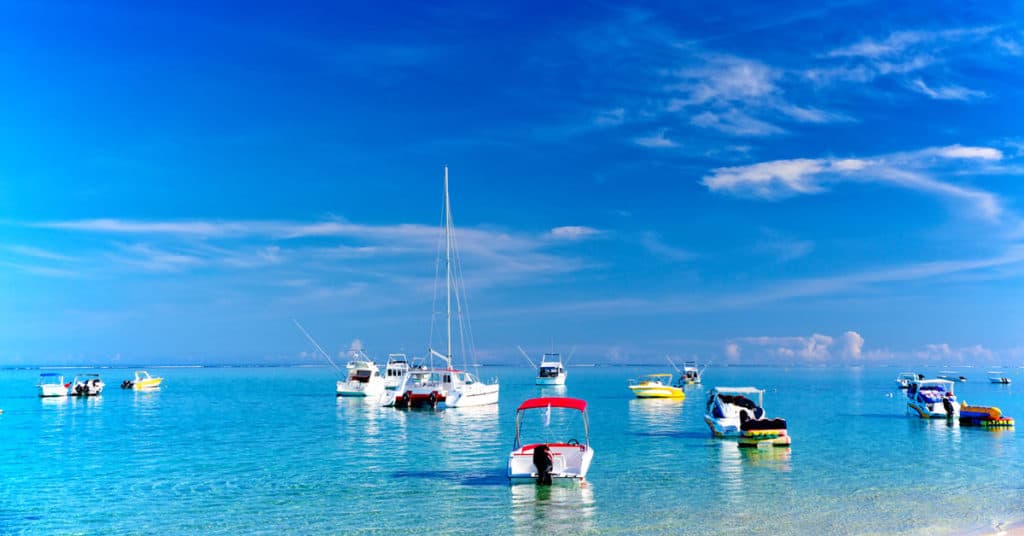
Similarities and Differences Between Boats, Yachts, and Ships
The many bodies of water all over the world are home to an extensive collection of different watercraft. There are so many shapes and sizes that they come in that it is nearly impossible to fit every single one into a specific classification.
However, in the following table, I did my best to loosely define ships, yachts, and boats so that it is easy to see the differences between the types of watercraft.
As I mentioned earlier, it is impossible to fit EVERY SINGLE water vessel into a particular category, so there are tons of exceptions out there. In addition to the exceptions, different organizations, laws, and people classify types of boats slightly differently.
There is no universally accepted definition for ships, boats, and yachts, but instead many different sets of rules and regulations. In this article, I have tried my best to use the most commonly accepted definitions for each watercraft type.
Now that we’ve gone over some of the main differences and similarities between boats, ships, and yachts, let’s take a look at each type of vessel individually and look at their most prominent characteristics and attributes.
What Exactly is a Boat?
Boats come in a vast array of sizes and shapes. To many people, the term “boat” simply refers to nearly any watercraft, but there are actually a few restrictions and defining characteristics that all boats have. So let’s just get right into it and take a quick look at what exactly qualifies a vessel as a boat.
Overall Size of Boats
As I said before, there is a massive catalog of different types of boats, and they come in a variety of sizes. There are huge boats that hold lots of cargo or people, and then there are smaller ones that barely can stay afloat with a single person on board.
Typically, boats are defined as watercraft that are less than 197 feet long. However, most boats you are likely to encounter on the water are usually around 30 feet long.
General Price Range of Boats
Again, it is hard to accurately give a price range for all boats because they come in so many different sizes, styles, and types, but most modern boats seem to fall in the $1,500 to $100,000 range.
Small Jon boats can cost even less than $1,500, while large sailboats and houseboats can cost well above $100,000.
Most Common Uses of Boats
Boats are used all over the world for a variety of different reasons and to do many tasks. Many types of boats serve a wide range of uses, but most are primarily used as a residence, for pleasure, or commercially.
Some of the most popular types of boats, such as sailboats, bowriders, and dinghies, are commonly used for enjoyment, fishing, racing, or other pleasurable activities. There are also many types of houseboats used as residences and commercial boats used for chartering or moving goods or people.
Propulsion Method of Boats
Due to the wide variety of boats, you are likely to find boats propelled by almost every propulsion method imaginable. Some of the more popular propulsion methods for boats to use are man-power, wind power, and motor power.
Boats on the smaller end often use the power of the people on board to row or paddle, while larger boats rely on sails or powerful motors attached to the stern. Many boats use more than one propulsion method, either together or with one of them as a backup.
What Exactly is a Yacht?
Yachts have many of the same attributes as boats, but their quality, size, and luxury really set them apart. When someone says “yacht,” many people imagine watercraft that are SUPER LARGE, and while there are lots of massive yachts, many smaller boats also qualify as yachts, which might surprise you.
Overall Size of Yachts
There are many different sized yachts, and the rules regarding how big they have to be are not very strict. In general, luxury watercraft greater than 33 feet in length are considered yachts. However, boats smaller than 33 feet are sometimes called yachts if they are exceptionally luxurious and elegant.
There is no upper limit to how large a yacht can be. Yachts longer than 100 feet are often referred to as mega yachts, and ones over 150 feet long called are super yachts.
General Price Range of Yachts
Because the very definition of a yacht requires it to be very luxurious, they often come with quite a price tag as a result. There is quite a range of different price points for yachts, ranging from $250,000 to $50,000,000 and beyond.
Most Common Uses of Yachts
Yachts, because they are so expensive to maintain and purchase, are primarily used for pleasure purposes. Day trips out on the water are typical for yachts, although they often have overnight cabins, so longer excursions are popular.
Chartered yachts are also very popular, which bridges the gap between commercial and pleasure. Although, when you are on a chartered yacht, it is usually for the sole purpose of having a great time and enjoying yourself.
Propulsion Method of Yachts
Because yachts are considered very luxurious and often so large, they are usually solely propelling using motor power. Even if a yacht is on the smaller end of the spectrum, they often only use a motor as a means of driving the craft through the water.
However, many large sailing yachts out there use sails and the wind to propel the vessel. So while the large majority of yachts use motors, keep in mind that some large and luxurious sailboats can be considered yachts.
What Exactly is a Ship?
Throughout history, large ships have been a helpful tool for many civilizations and have allowed them to transport goods and explore places beyond their homes. In modern times, ships are quite common and are used for a variety of different reasons.
Overall Size of Ships
One of the primary characteristics of ships that set them apart from boats is their size. Ships, especially in modern times, are often MASSIVE and are restricted to navigating only extensive waterways.
Vessels greater than or equal to 197 feet long are often considered ships. However, most ships today are huge and often fall in the 1,000-foot range or larger.
General Price Range of Ships
Most individuals will never own a ship due to their extreme maintenance and the cost of purchasing one. While many smaller ships are far less expensive, most modern ships cost anywhere between $50 and $500 million.
Large and luxurious cruise ships can even cost upwards of $1 billion to construct, and that’s not even taking into account staff, maintenance, and other costs.
Most Common Uses of Ships
Ships perform many different duties throughout the world, but usually, they are used to transport passengers or goods over long distances. In addition, they are also often used by military, scientists, fishers, and a plethora of other professions and people. They are also often used for pleasure purposes, in the form of passenger cruise ships.
Overall, ships encompass a large selection of vessels that perform many different duties.
Propulsion Method of Ships
Due to their large size, most modern ships are propelled using motors. However, even though ships are equipped with massive motors, they are still pretty slow and often move at around 20 knots per hour, although some move much quicker.
While most, if not all, ships today use motors to propel themselves through the water, this was not always the case. Before motors were around, many civilizations used ships for military, exploration, transportation, shipping, and many other uses. During these times, ships were powered primarily by man and wind power. Even today, you can occasionally find a sail-powered ship, though they are quite rare.
James Gerard
Hi, I'm James! I started sailing at a very early age here in the UK, and have enjoyed so many opportunities to sail all over the world. I created this website to share the many sailing tips I've leaned over the years, so that you can also discover the joy of sailing with safety and confidence.
Recent Posts
How to Predict Wind Direction & Speed from a Surface Pressure Chart
Learning how to read a surface pressure chart will allow you to predict the wind speed and direction based on the weather chart. This will help you in planning your next sailing trip.
What Does a Black & Yellow Buoy Mean? (Cardinal Marks Explained)
If you see a black and yellow buoy while you're sailing, don't ignore it. Cardinal Marks are there to help you avoid hidden hazards in the water. This helpful article will help you to identify a...
“Boat” vs. “Ship”: Chart A Course To Understand The Difference
- Boat Vs. Ship
- Yacht Vs. Boat
Ahoy, me hearties! A true seadog worth their salt would never let aboard a landlubber who calls their ship a boat . That kind of mixup is the talk that gets you walking the plank!
In this article, we’ll sail the seven seas of nautical knowledge to define the difference between the words ship and boat , explain what they refer to in technical and casual use, provide examples of different kinds of both ships and boats , and we’ll even clear up the meaning of the word yacht .
🚢 Quick summary
In casual use, the word boat is often used to refer to any watergoing vessel, regardless of its size or how it’s powered. However, large oceanfaring watercraft—those that use multiple sails or engines—are more properly called ships . In contrast, the word ship isn’t commonly applied to smaller craft. The word yacht is typically used to refer to any larger noncommercial vessel—one used for sailing or other recreation, as opposed to business.
What’s the difference between a boat and a ship ?
By definition, a boat is “a vessel for transport by water,” “a small ship,” or “a vessel of any size built for navigation of rivers or inland bodies of water.” In casual use, the word boat is used to refer to any vehicle used to travel on the water—anything from a canoe to an ocean liner.
In this kind of casual and general usage, the word boat is often used to refer to watercraft of all sizes and types, as you can see in the variety of terms that include the word, such as sailboat , motorboat , fishing boat , rowboat , tugboat , paddleboat , and lifeboat .
In contrast, the word ship is typically reserved to refer to a large, ocean-faring vessel propelled by multiple sails or engines.
(Of course, the word ship is also used to refer to large, nonwater craft, such as airship and spaceship .)
In technical, nautical contexts, the word ship sometimes specifically refers to a sailing vessel that has three or more square masts. As is the case with boat , though, the word ship is applied in the name of a variety of large watercrafts, including cruise ship , cargo ship , pirate ship , battleship , longship , and steamship .
Go Behind The Words!
- By clicking "Sign Up", you are accepting Dictionary.com Terms & Conditions and Privacy policies.
- Name This field is for validation purposes and should be left unchanged.
In contexts where it’s important to distinguish the difference, the distinction made between ship and boat is typically based on the size of the craft being discussed and if it is used only for ocean or sea travel. Additionally, the word boat can refer to vessels that don’t have any sails or engines, such as a kayak or a rowboat, whereas the word ship usually refers to vessels with many sails or large engines. Even in casual usage, it’s very uncommon for someone to call a small craft a ship , unless they’re doing so jokingly.
One distinction made in nautical contexts is that the word ship often refers to vessels too large to fit inside other vessels. By contrast, the word boat is often used to refer to smaller craft that can fit inside larger ones. For example, a massive cruise ship may have a large number of lifeboats inside it.
What are you sailing? An ocean or a sea ? Learn the difference here.
Yacht vs. boat
The word yacht typically refers to a vessel used for private, noncommercial reasons (those other than business), such as sailing or racing. As a general term, the word yacht can refer to any watercraft that isn’t intended to be used to make money, which includes anything from racing sailboats to billionaires’ floating ultra-luxury mansions.
The word yacht is not used to refer to small vessels, such as row boats or canoes. In casual usage, a yacht may be referred to with the more general terms boat or ship , but certainly not all ships and boats are yachts .
What's the difference between "uncharted" and "unchartered" territory?
Commonly Confused

Trending Words
[ ad naw -zee- uh m ]
- Phone This field is for validation purposes and should be left unchanged.

- 7 Differences Between a Ship and a Boat
Although everyone knows the difference between a ship and a boat, there are quite a few who often get confused between the two terms. Technically, there is a thin line between them and this often leads to major confusion.
While talking about the difference between a ship and a boat, the first thing that comes to one’s mind is their sizes. Traditionally people consider a ship as a large ocean-going vessel, whereas boats are comparatively quite smaller in size.
To understand the differences between ships and boats, a number of aspects need to be taken into consideration.
Mentioned below are seven main aspects which are taken into account to differentiate between a ship and a boat.
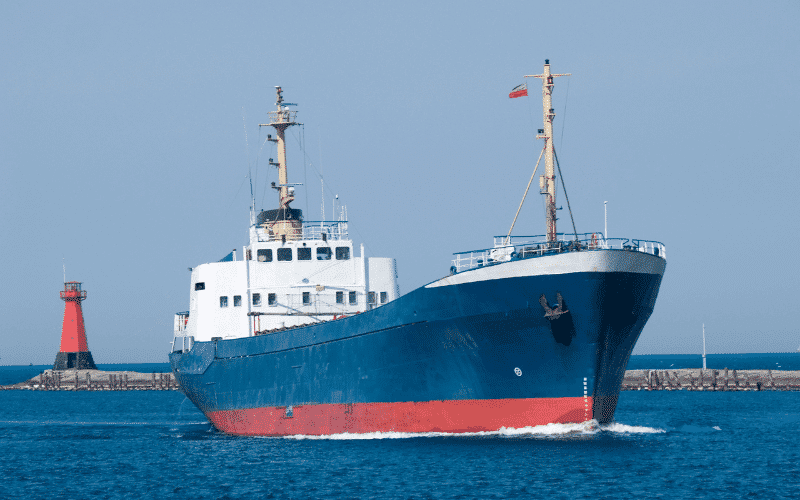
1. Size of Ship and Boat
The most important aspect that is considered while stating the difference between a ship and a boat is the size. It is said that the best way to differentiate between a ship and a boat is to remember that “A ship can carry a boat, but a boat cannot carry a ship.”
Technically speaking, a mode of water transport that weighs at least 500 tonnes or above is categorised as a ship. In comparison, boats are stipulated to be quite compact in their structural size and displacement.
2. Operational Areas
A major difference between ship and boat is that of their areas of operation. Ships are vessels that are operated in oceanic areas and high seas. They usually include cruise vessels , naval ships, tankers , container ships , RoRo ships , and offshore vessels . They are mainly built for cargo/ passenger transportation across oceans.
Boats, in contrast, are operable in smaller/ restricted water areas and include ferrying and towing vessels, sail vessels, paddle vessels, kayaks , canoe , patrolling vessels etc. Boats are mainly used for smaller purposes and mainly ply in areas near to the coast.
3 . Navigation and Technology
Technologically, boats are simple vessels with less complicated equipment, systems and operational maintenance requirements. Since ships are required to be operable for longer time-duration and travel across oceans, they are manned using advanced engineering, heavy machinery, and navigational systems .
This is one of the major differences between a ship and a boat.
Ships are huge in size and therefore they are operated by professionally trained navigators and engineers . A ship requires a captain to operate the ship and guide the crew.
On the other hand, the size of the crew on a boat depends on the size of the boat. It can be one person or a full-fledged crew depending on the size and purpose of the boat.
5. Cargo Capacity
A boat is small to the mid-sized vessel, which has a much lesser cargo-carrying capability as compared to a ship.
Ships are specifically made to carry cargo or passengers or boats, whereas boat is a generic term used for a variety of watercraft.
Mainly boats are used for recreational purposes, fishing, or ferry people.
6. Construction and Design
When it comes to construction and design, ships are complicated structures having a variety of machinery systems and designing aspects for the safety and stability of the ship.
A boat is much simple in construction and build, and has lesser machines and design complexities.
7. Propulsion
A boat can be powered by sails, motor, or human force, whereas a ship has dedicated engines to propel them . (Ships can also be propelled by sails or other advanced propulsion technologies)
Even though all vessels operating in the high seas are referred to as ships, submersible vessels are categorically termed as ‘boats.’
This is mainly because of the fact that in the earlier centuries, submersible vessels could be hoisted on ships till they were required to be used in naval operations.
However, while talking about differences between a ship and a boat, vessels floating on the water surface is mainly considered.
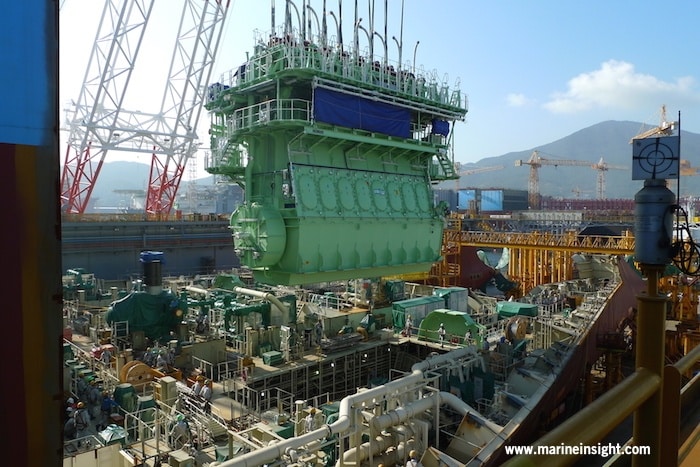
The usage of the term ‘ship’ or ‘boat’ also depends on the region it is being used in. People from several countries often refer a medium-sized fishing vessel as a boat, or a medium-sized ferry or a recreational boat as a ship. As can be seen, people have a tendency to generalise a vessel on the basis of its size.
However, it is to note that the difference between a ship and a boat depends on a number of factors as discussed above.
You might also like to read:
- Types of Sailboats: A Comprehensive Classification
- A Guide to Different Types of Boats
- A Guide To Types of Ships
- Types of Fishing Vessels
Disclaimer : The information contained in this website is for general information purposes only. While we endeavour to keep the information up to date and correct, we make no representations or warranties of any kind, express or implied, about the completeness, accuracy, reliability, suitability or availability with respect to the website or the information, products, services, or related graphics contained on the website for any purpose. Any reliance you place on such information is therefore strictly at your own risk.
In no event will we be liable for any loss or damage including without limitation, indirect or consequential loss or damage, or any loss or damage whatsoever arising from loss of data or profits arising out of, or in connection with, the use of this website.
Do you have info to share with us ? Suggest a correction
Related Articles
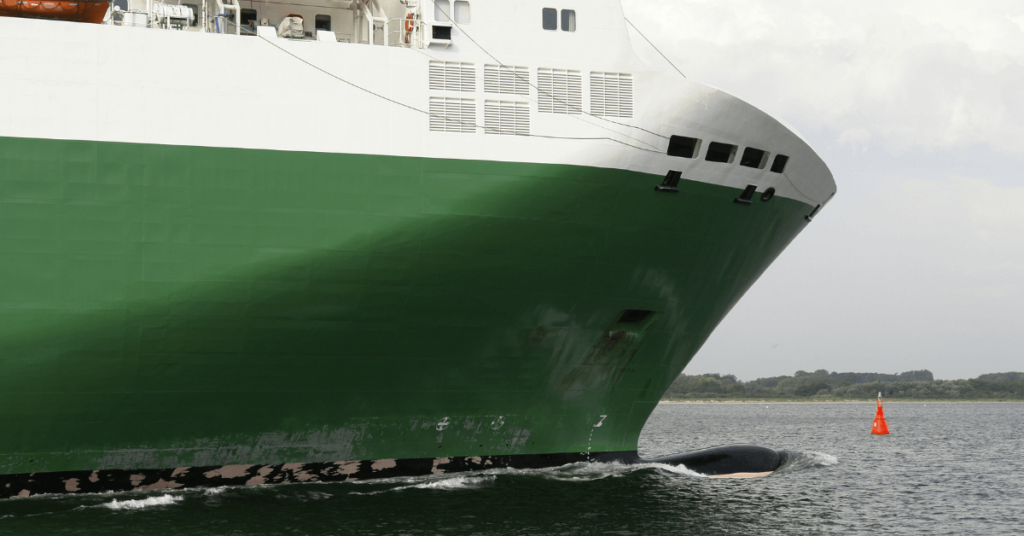
What are Hull Ferries?
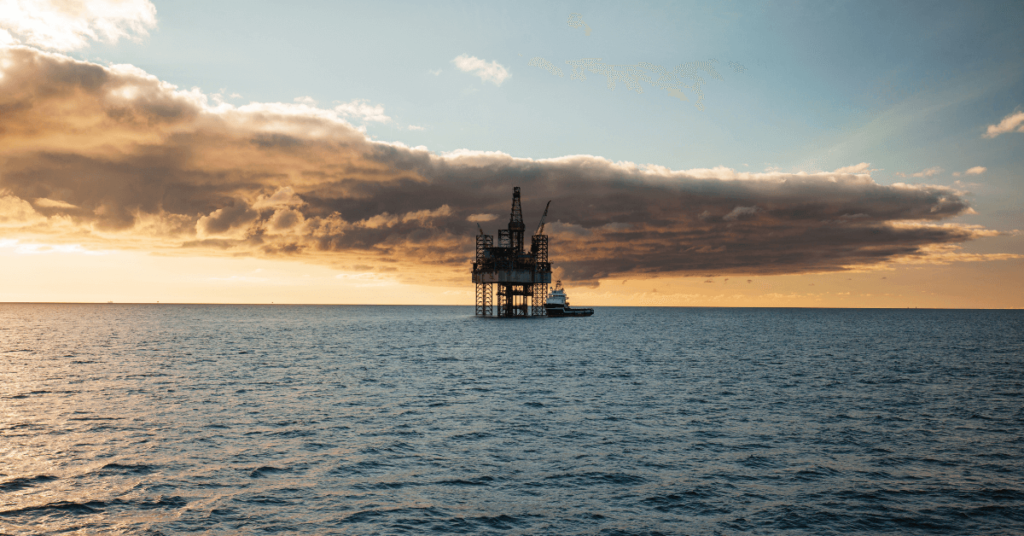
New Jack-Up Vessel by Beluga- Hochtief
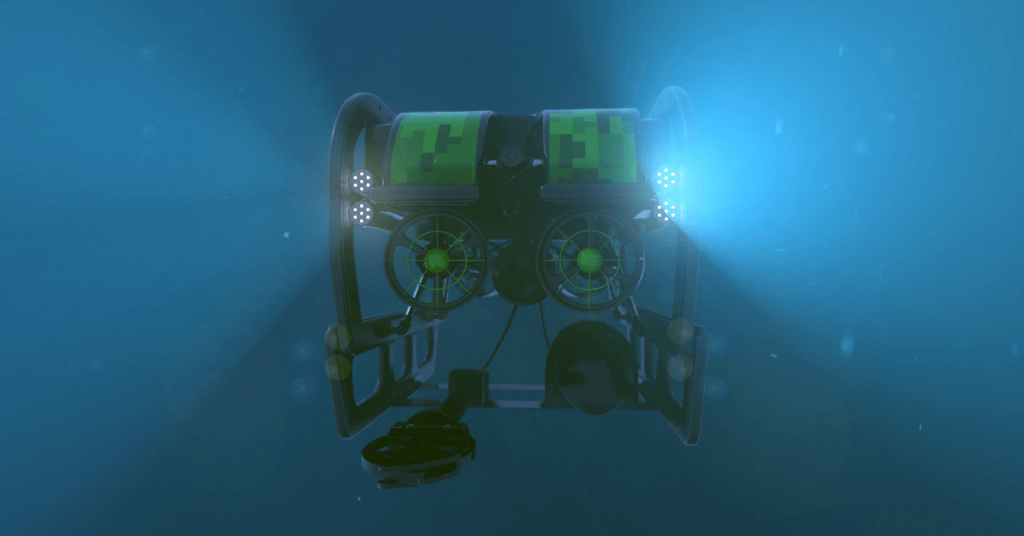
Everything You Ever Wanted to Know About Autonomous Underwater Vehicle (AUV)

About Author
Raunek Kantharia is a marine engineer turned maritime writer and entrepreneur. After a brief stint at the sea, he founded Marine Insight in 2010. Apart from managing Marine Insight, he also writes for a number of maritime magazines and websites.
Read More Articles By This Author >
Daily Maritime News, Straight To Your Inbox
Sign Up To Get Daily Newsletters
Join over 60k+ people who read our daily newsletters
By subscribing, you agree to our Privacy Policy and may receive occasional deal communications; you can unsubscribe anytime.
BE THE FIRST TO COMMENT
46 comments.
Please i am a National Diploma student of Maritime Academy of Nigeria Oron studying nautical science, i want to know more about the course
Hi.thank its so good and sufficient
As a profesional mariner of over 25 years I would like to “weigh in” on this subject. What I will say is not about the currently accepted distinction between ship and boats, but rather historical. When ships (powered by sails) began to start losing trade to vessels powered by engines (boats) they as an industry attempted to associate these vessels with unplesant attributes like noise, soot, vibration, and in some cases slower speed. The sailoing industry (both cargo and passanger) would say that you could SAIL on a quiet, clean, calm, fast ship or go one of those dirty loud vibrating slow BOATS with an engine. The concept a ship being superior and a boat being inferior was sucessfully instituted. The engine powered vessels simply side stepped the ridicule bestowed on the term “boat” and made bigger, faster, clean, quiet vessels and took the market from the sail powered vessels along with the defination of SHIP for themselves. i wont step into the curret debate of what constitutes a boat or a ship but the origins of the debate stem from new technology (steam engines) fighting over market share.
A large freighter (1000′ x 85′, think of the Edmund Fitzgerald) hauling iron ore on the great lakes is referred to by her crew and company as a boat, never as a ship!
“Boats in contrast, are operable in smaller/ restricted water areas and include ferrying and towing vessels, sail vessels, paddle vessels, kayaks, canoe, patrolling vessels etc. Boats are mainly used for smaller purposes and mainly ply in areas near to the coast.” “Technologically, boats are simple vessels with less complicated equipment, systems and operational maintenance requirements.”
Correct me if I am wrong but, isn’t a submarine classed as a boat? That kind of contradicts what you have stated above.
comment:the any where abroad/indian officers you can any time call me on 30 year’s on merchant officers
You can put a boat on a ship but not visa versa eg life boats…
What is the difference between a boat and a ship?
1. The boat leans to the right when turning right
2. The ship leans to the left when turning right.
This is what I have been told by a old (90 Year old boat capt)
Great reply’s. some years ago while on the QE 2 a passenger asked one of the officers when does this boat dock? The young officer replied. “Madam, this is a Ship not a boat, a boat is those you get into when this ship is sinking!
Hello. May I please ask for some assistance from the forum?
I am writing a blog/journal on the differences between ships and yachts. What has prompted this conversation is the plethora of ‘superyachts’ now plying the international oceans and performing well on deep water passages.
Surely some of these can come under the category of ‘ship’, and not yacht, since many are being built on a larger scale than anything we’ve seen in past years. My understanding of the determination of a ‘ship’ is : Length, Tonnage, Draft and Displacement.
I have read your forum discussion regarding use, but I am still unclear as to where the line is drawn for this category. Many of the ‘superyachts’ carry cars, helicopters, pools, and require very advanced equipment, captain and crew. Perhaps we will soon see this as a real conversation in the industry.
Appreciatively, Rosanne Allen-Hewlett For ‘The LUXE Report’ ( Sailor, racer of only boats and yachts )
I was told that the difference between a ship and a boat is that a ship has a funnel and a boat doesn’t, no matter it’s size….
David Musselwhwite’s comment is the best way to determine a boat of a ship. This holds true for submarines (boats). If it leans into the turn, it is a boat. If it leans out on a turn, it is a ship.
In response to comments about the Edmund Fitzgerald, when you spend your life on one you can call it whatever you want. I am sure they all knew it was a ship, I served 20 years in the Navy and always said I was heading back to the boat even though I knew it was a ship.
While in Boot camp in 1964, US Coast Guard, we were told that a ship is 95 feet or longer and a boat is 94 feet and under. That makes it pretty simple.
With over 30 years in the marine industry including working at sea, ship building and ship repair, I would offer my comments.
Yes all above is true. My understanding is that the bottom line is ” a Ship carries boats ie Lifeboats”. If it doesn’t have a proper lifeboat, it is not a ship.
The best a boat has is dinghies or liferafts etc. Consequently a submarine does NOT carry life boats. There are many broader requirements Size and the ability to navigate very heavy seas, such as those whipped up by a tropical Revolving storm (TRS). It must be designed to travel in the open sea in all weather conditions and have lifeboats that can do the same. They carry cargo or passengers and have a substantial crew to operate it including engineers.
As far as the Edmund Fitzgerald is concerned, these vessels are an enigma. They were large and qualify in most areas, but – was it capable of going to sea and did it have sea-going lifeboats? Ironically it suffered probably as bad a storm as it would have done at sea. The problem is that in fresh water the waters are more treacherous than salt water as they rise up far more quickly.
But then again it sank meaning that it couldn’t handle it. Yes it was a large vessel but was it a Ship – ?
What is difference among?
Marine Boat Marine Ship Marine Craft Ship Boat
What is difference between Marina and Marine?
Being the son of a WW II submariner. My dad cruised the Atlantic of the east coast of US and in many conversations about the war he always called his boat a boat never a ship.Thats it!!
The simplest and most accurate definition I stay with is that a ship can carry a boat but a boat cannot carry a ship . SIZE MATTERS !
Captain chalga: try to form a coherent sentence.
I asked a friend of mine, “What is the difference between a boat and a ship?” He said, “About 100 feet . . .”
Thank you for the information. My husband won this discussion. God Bless all who are bravely floating on/in one. I am terrified of the ocean or even a small lake. You have my utmost respect for your sacrifice. I love seafood but would never know the pleasure of eating it without you brave souls. Thank you.
As a proud Submariner I have to disagree and will always say that I serve on a boat.
There is the Boat of Millions of years,which is a very advanced spacecraft able to.travel the millions of light years betwen Galaxies.
And you have vessels such as the Motor Vessel Arlene out of Port Arthur.
I was once told that a ship had multiple decks and a boat had only one.
When I queried sailing yachts that had berths under part of the deck, it was modified to the deck on a yacht is as much structural as deck, but if a vessel has 2 or more non structural “floors” it is a ship.
Then I mentioned tug boats and fishing boats and it all got confused.
It’s a bit like the difference between horse and pony. Despite every one saying it’s size, the falabella is a horse and polo ponies are ponies.
A naval architect (constructors) view is that to be a ‘ship’ a vessel must have at least one continuous internal deck running the length of the vessel. Large Submarines may have complete decks forward however, going aft, it is normal to have to descend a ladder onto a lower ‘engine room’ deck-level or platform. Some large freighters have a similar construction with internal split deck levels and that is why they are correctly known as boats, although in some cases the term ‘ship’ feels more appropriate because of their large displacement. The argument regarding leaning into or out of a turn is an interesting idea, however this may have more to do with hull and propulsion characteristics than vessel construction. In reality, as with most nautical expressions, whatever feels best to use is probably best and relying on the opinion of a sailor, with regards to an explanation of nautical expressions, puts you at the mercy of a sharp sense of humour.
It might be worth mentioning that some might refer to a ship as “boat” as a diminutive term of endearment, similar to the personification of a car or a pet by assigning the human pronouns to them.
I was once told a SHIP sails the oceans, a BOAT sails on rivers and lakes.
IT SEEMS WE HAVE VERY KNOWLEDGEABLE SEA MEN IN THE HOUSE . BUT I AGREE TOTALLY WITH JEREMY MEYER
It’s always been my info is that a boat can be up to 197’ whereas a ship is over that length. As with anything, I’m sure there are exceptions.
some of the people got it spot on. Tilt away from direction of turn = ship. Tilt towards the direction of turn = boat.
There are two points on every vessel. Center of buoyancy and center of gravity. A ship’s center of gravity is above its center of buoyancy. A boat’s center of gravity is below its center of gravity.
Anyone can answer me why we only know the bareboat charter for any size of the ship? It never mentions bareship charter?
“some of the people got it spot on. Tilt away from direction of turn = ship. Tilt towards the direction of turn = boat. There are two points on every vessel. Center of buoyancy and center of gravity. A ship’s center of gravity is above its center of buoyancy. A boat’s center of gravity is below its center of gravity.”
Except a kayak (or canoe) is like a ship – cg is above cb. If you get a ruddered kayak up to speed and hit the rudder hard it will heel outward like a ship. Since the paddler can easily influence heel, if you want to make a hard turn you heel the ‘boat” outward (to lessen the ends in the water) and sweep stroke on the outward side to spin the “boat”. Is a kayak then a “ship”? Hardly. This is exactly the problem with trying to make one pithy statement to define a ship or boat. It is far more complex than that.
I completely agree with you that the difference between a ship and a boat is the size. One of my friends have a boat, she bought it from Boat Lagoon Yachting. Thanks for sharing!
If you can haul it on the back of truck (even trailered), it’s likely a boat…but if the anchor weighs in like a truck it’s definitely a ship. Obviously, some subs are one or the other regardless of whether you can stuff a (non-inflatable) life boat inside. [Army logic from qualified ex-boat commander, combat support boats, bridge section, Corps of Engineers.]
I grew up near the Welland Canal, and it’s true: vessels which plied the Great Lakes were called “lake boats”, or more commonly, “Lakers”. Oceangoing vessels a were always and reflexively called “ships”..
I am wondering if the naval architect”s comment about internal decks makes the difference, as even a non-engineer can see that a deck extending stem to stern would provide more stability to a vessel’s structure.
The lake boats are always longer than the ocean-going ships, so it’s not size.And we occasionally get a visit from “tall ships”, which are oceangoing sailing vessels, but relatively short.
That’s really informative post. I appreciate your skills, Thanks for sharing.
I will take a shot at this. The word marine is redundant before ship and boat. The word “marine” relates to the sea and one of the conditions of being a ship is that it is ocean going. This does leave the possibility of not being a river boat but a marine boat. I would use the expression sea-going boat.
Marine craft is a useful expression when there is a need to make it cleat that you are not referring an aircraft, space craft etc.
On a general note there are no absolute rules or definition. All we can do is give examples of how the words are used. Companies, governments, navies and anyone else are free to make gheir own definitions but nobody else is bound by them.
I served on the U.S.S. CG-19 ‘THE DZLE & U.S.S. CV-63 KITTY HAWK FOR THE US NAVY in the 80’s. So what about the placement of the helm being center of Bridge on a ship & on starboard side usually on a boat?
With many years of sailing lakes to blue water sailing and large power yachts I can offer this for abot of levity. Afterall,the SeaView had the ‘Flying Sub” flown or driven undersea,on the surface and flown by Captain,Admirals and sadly Polititians and insane quasi research criminals. The Flying Sub also had an inflatable Zodiac,so both could be considered Life saving vessels. Plus,it was really cool!
Can be as difficult as we want. My training was as a NCO (enlisted man in the USN. As others have stated, A ship will lean away from its turn. A boat will lean into the turn. This is naturally due to there the center line of gravity is located. Cargo ships mass above that line. A boat can be loaded onto a ship (lifeboats). Regarding Submarines, they are affectionately referee to , by the crew, as boats and that goes back to WWI /II, the ELB. Electric Boat Div of General Dynamics, located Groton Connecticut .
This design is wicked! You obviously know how to keep a reader entertained. Between your wit and your videos, I was almost moved to start my own blog (well, almost…HaHa!) Fantastic job. I really loved what you had to say, and more than that, how you presented it. Too cool!
More importantly… are they all “She’s” ?
I’ve been wondering about this since I was younger and saw The Hunt for Red October. The COB (Chief of the Boat) was an interesting character, and I wondered by a Sub Chief was called Chief of the Boat, if a sub was a naval ship. Some very interesting and fascinating answers in here! I like the one about how a ship turns, leaning into it or not. That makes sense to me. As for the tiny kayak/canoe exceptions to this, I’d guess that if a human weighs more than the ‘vessel’ and can manipulate it’s attributes of buoyancy or center of gravity whichever, with their own body, then it doesn’t really count as either a boat or a ship. It really has no deck, nor propulsion other than human muscle, no anchor, etc. I don’t see it as much more than a modern design for what used to be termed a ‘raft.’ But I am just spit-balling here, don’t blast me! lol
That’s really nice post. I appreciate your skills. Thanks for sharing.
All the information that you shared with us is very useful for us. Thank you for sharing with us.
Leave a Reply
Your email address will not be published. Required fields are marked *
Subscribe to Marine Insight Daily Newsletter
" * " indicates required fields
Marine Engineering
Marine Engine Air Compressor Marine Boiler Oily Water Separator Marine Electrical Ship Generator Ship Stabilizer
Nautical Science
Mooring Bridge Watchkeeping Ship Manoeuvring Nautical Charts Anchoring Nautical Equipment Shipboard Guidelines
Explore
Free Maritime eBooks Premium Maritime eBooks Marine Safety Financial Planning Marine Careers Maritime Law Ship Dry Dock
Shipping News Maritime Reports Videos Maritime Piracy Offshore Safety Of Life At Sea (SOLAS) MARPOL
WAIT! Did You Download 13 FREE Maritime eBooks?
Sign-up and download instantly!
We respect your privacy and take protecting it very seriously. No spam!
WAIT! Did You Download 12 FREE Maritime eBooks?
- The Inventory
When Is a Ship a Yacht, and When Is It Not?
The difference between the two broad categories is determined by one key factor..
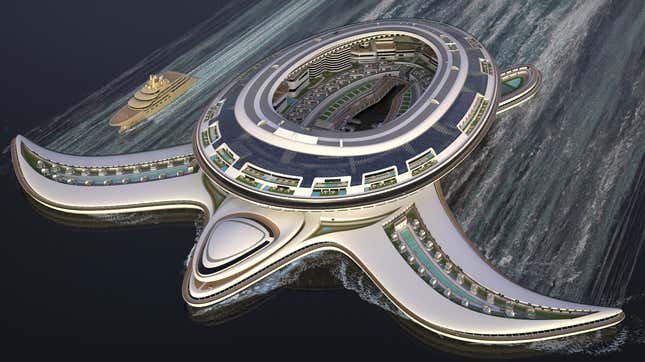
Yachts have been in the news a lot more frequently in recent years. There have been stories like when a Dutch yacht builder requested to temporarily dismantle an iconic bridge in Rotterdam to get a 417-foot-long sailing yacht commissioned by Jeff Bezos out to sea, or when authorities around the world seized the yachts of Russian oligarchs in the wake of Russia’s invasion of Ukraine. Usually, the most notable yachts have the prefixes super-, mega- and even giga- attached to convey their truly enormous sizes relative to most other privately-owned vessels.
Related Content
As a result, ‘yacht’ as a term has basically become meaningless just by the sheer proliferation of private ships in recent years that defy all potential superlatives. It’s like when you say a word so often that it loses all its meaning. Why are there so many more huge luxury maritime vessels in the world? Rising levels of global wealth inequality? Technical innovation? I don’t know. The Pangeos is the latest planned monument to ostentatious wealth. The 1970-foot-long turtle-shaped ship is the brainchild of Italian designer Pierpaolo Lazzarini. However, this self-declared terayacht is not a yacht by definition.
The only distinction between a yacht and a ship is simple: It is the vessel’s intended purpose. When you enter a foreign country, every customs agent will ask, “What is the purpose of your trip, business or pleasure?” It is the same when categorizing large water vehicles. The sole purpose of a yacht is recreation. If the craft has any other intended purpose, such as naval warfare or maritime commerce, it’s a ship. The U.S.S. Gerald R. Ford , a nuclear-powered U.S. Navy aircraft carrier, and the Carnival Celebration, a 5,280-passenger Carnival cruise ship , are both ships.
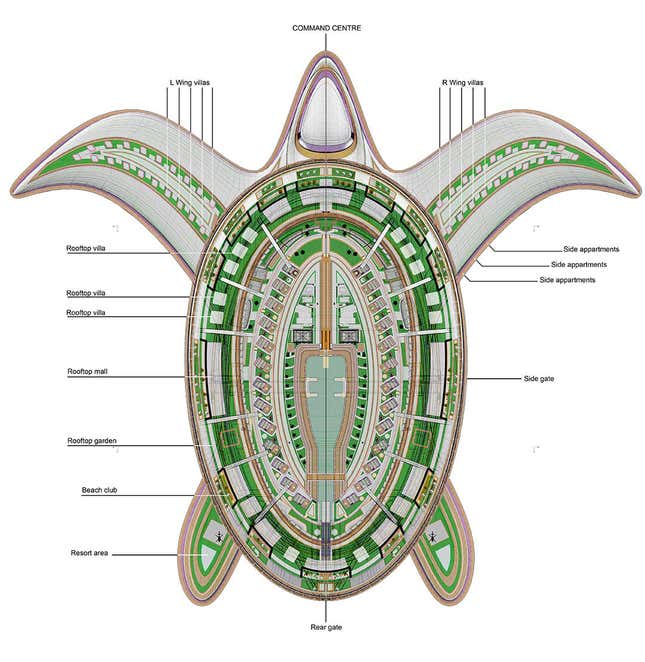
The plans for the Pangeos might feature private vacation villas and apartments. However, the absurd craft would also include also shopping malls and a hotel resort, making the Pangeos a ship. The Pangeos, named after the prehistoric supercontinent of Pangea, will likely never be built due to the ship’s $8 billion price tag.
Besides ship and yacht, boat is another commonly used term. The definition of a boat is much more vague and open to interpretation. Boats tend to be small personal craft and only carry a few people. Though, it’s common for sailors to refer to vessels of any size or purpose as a boat.

What’s the Difference Between a Ship and a Boat?
When it comes to talking about watercraft, the terms “ship” and “boat” are often used interchangeably.

However, there are differences between the two that are worth exploring. Understanding these differences can help clarify what type of vessel is being referred to and what its capabilities may be.
Defining the terms is a good starting point. Generally, a ship is a larger vessel that is used for commercial or military purposes.
It typically has a displacement hull, which means that it moves through the water by pushing it aside as it goes.
A boat, on the other hand, is a smaller vessel that can be used for a variety of purposes, including recreation, transportation, and fishing.
Boats can have either displacement or planing hulls, which means that they use the water’s surface tension to lift themselves out of the water and move more quickly.
Table of Contents
Key Takeaways
- Ships and boats are not the same thing and have distinct differences in their design and construction.
- The terms “ship” and “boat” are often used interchangeably, but a ship is typically larger and used for commercial or military purposes while a boat is smaller and used for a variety of purposes.
- Understanding the differences between ships and boats can help clarify what type of vessel is being referred to and what its capabilities may be.
Boat vs Ship

Defining the terms “ship” and “boat” has been a topic of debate for centuries. The English language has evolved over time, and so have the definitions of these terms.
While the two words are often used interchangeably, there are some key differences between them.
Dictionary Definitions
According to the Merriam-Webster dictionary, a ship is defined as “a large seagoing vessel.” On the other hand, a boat is defined as “a small vessel for travel on water.”
The Oxford English Dictionary defines a ship as “a large seagoing vessel,” while a boat is “a small vessel for use on water.”
Key Differences
The main difference between a ship and a boat is their size. A ship is typically larger than a boat and can carry more cargo and passengers.
Ships are also designed for longer journeys and can travel across oceans .
Boats, on the other hand, are smaller and are generally used for shorter trips, such as fishing or pleasure boating.
Another key difference between the two is their purpose. Ships are designed for commercial or military purposes, while boats are used for recreational or personal use.
Ships are often used for transporting goods, while boats are used for activities such as fishing, water sports, and leisurely cruising.
In conclusion, while the terms “ship” and “boat” are often used interchangeably, there are distinct differences between the two.
Ships are larger vessels designed for longer journeys and commercial or military purposes, while boats are smaller vessels used for recreational or personal use.
Understanding the differences between these two terms can help clarify communication in maritime contexts.
Design and Construction

When it comes to the design and construction of vessels, there are some key differences between ships and boats.
In general, ships are larger and more complex than boats, and they require more sophisticated engineering and technology to design and build.
Ship Design and Construction
Ships are designed and constructed to be able to withstand the harsh conditions of the open sea .
This means that they need to be stable and able to handle large waves and high winds.
To achieve this stability, ships are designed with a low center of gravity and a wide beam.
In terms of construction, ships are typically built using steel or other strong materials that can withstand the stresses of the open sea.
They also require a significant amount of engineering and technology to design and build, including advanced computer modeling and simulation tools.
Boat Design and Construction
Boats, on the other hand, are generally smaller and less complex than ships. They are often used for recreational purposes, such as fishing or pleasure cruising, and they are designed and constructed to be more nimble and maneuverable than ships.
In terms of design, boats can vary widely depending on their intended use. Some boats are designed for speed and maneuverability, while others are designed for stability and comfort.
They can be made from a variety of materials, including wood, fiberglass, and aluminum.
Boats are typically less expensive and easier to build than ships, but they still require a certain level of engineering and technology to design and construct.
They need to be stable and safe, and they must be able to handle the conditions of the water they will be used in.
Size and Capacity

Ships are large vessels designed to navigate deep waters and transport cargo or passengers over long distances.
Their size and capacity vary depending on their intended use. The cargo capacity of a ship is determined by its size, which is measured in gross tonnage (GT) or deadweight tonnage (DWT).
The GT is the total volume of all enclosed spaces on a ship, while the DWT is the weight of cargo, fuel, water, and stores that a ship can carry.
Large cargo ships can have a capacity of over 20,000 TEUs (twenty-foot equivalent units), which is equivalent to 20,000 twenty-foot containers.
These ships can be over 400 meters long and 59 meters wide. They are used to transport goods such as oil, chemicals, and other bulk cargo.
Container ships are the most common type of cargo ship and have a standardized design to accommodate shipping containers.
Passenger ships, on the other hand, are designed to transport people and have a capacity ranging from a few hundred to several thousand passengers.
Cruise ships are the largest passenger ships and can have a capacity of over 6,000 passengers.
Boat Size and Capacity
Boats are smaller vessels designed for use in shallow waters and for short-distance transportation.
They come in various sizes and shapes, ranging from small rowboats to large yachts. The capacity of a boat is determined by its size and weight-carrying capacity.
Small boats, such as dinghies and canoes, have a capacity of a few people and are used for recreational purposes.
Larger boats, such as motorboats and sailboats, can have a capacity of up to 15 people and are used for fishing, water sports, and short-distance transportation.
Types and Purposes

Ships are large seafaring vessels that are designed for a variety of purposes. The following are some of the most common types of ships:
- Cargo Ships: These are vessels that are designed to transport goods and cargo across the sea. They may carry a variety of goods, including raw materials, finished products, and consumer goods.
- Naval Ships: These are vessels that are designed for military purposes, such as protecting a country’s coastline or engaging in warfare. They may include warships, submarines, and other types of vessels.
- Passenger Ships: These are vessels that are designed to transport people across the sea. They may include cruise ships, ferries, and other types of vessels.
Types of Boats
Boats are smaller vessels that are designed for a variety of purposes. The following are some of the most common types of boats:
- Fishing Boats: These are vessels that are designed for fishing purposes. They may include commercial fishing boats or recreational fishing boats.
- Lifeboats: These are small boats that are designed to provide a means of escape in case of an emergency on a larger vessel.
- Kayaks and Canoes: These are small, lightweight boats that are designed for recreational purposes, such as kayaking or canoeing.
- Sailboats: These are boats that are powered by the wind. They may include racing sailboats or recreational sailboats.
- Motorboats: These are boats that are powered by an engine. They may include speedboats, yachts, and other types of vessels.
Ships and boats are designed for a variety of purposes, including recreational and commercial purposes.
Recreational purposes may include activities such as fishing, sailing, and cruising.
Commercial purposes may include transporting goods and cargo across the sea, as well as military purposes.
Cargo ships are designed to transport goods and cargo across the sea.
They may include container ships, which are designed to transport large containers of goods, or bulk carriers, which are designed to transport large quantities of bulk materials such as coal or grain.
Naval ships are designed for military purposes, such as protecting a country’s coastline or engaging in warfare.
They may include warships, submarines, and other types of vessels.
Passenger ships are designed to transport people across the sea. They may include cruise ships, ferries, and other types of vessels.
Fishing boats are designed for fishing purposes, either for commercial or recreational purposes.
Lifeboats are designed to provide a means of escape in case of an emergency on a larger vessel.
Kayaks and canoes are small, lightweight boats that are designed for recreational purposes, such as kayaking or canoeing.
Sailboats are powered by the wind, while motorboats are powered by an engine.
Operational Areas

When it comes to operational areas, both ships and boats can operate in a variety of environments, including oceans, inland waterways, rivers, lakes, and other bodies of water.
However, there are some key differences in the specific operational areas that are best suited for each type of vessel.
Ships Operational Areas
Ships are typically designed for deep water and oceangoing operations. These vessels are often larger and more powerful than boats, making them better suited for long-distance travel and heavy cargo transport.
Ships are commonly used for international trade and commerce, as well as for military operations and scientific research.
In addition to oceanic operations, ships can also operate in coastal areas, where they can transport goods and people between ports.
Some ships are designed to operate in specific environments, such as icebreakers that are used to navigate through frozen waters.
Boats Operational Areas
Boats, on the other hand, are better suited for inland waterways, such as rivers, lakes, and other bodies of water.
These vessels are often smaller and more maneuverable than ships, making them ideal for recreational activities like fishing, water sports, and sightseeing.
Boats can also be used for commercial purposes, such as transporting goods and people along inland waterways.
Coastal areas can also be navigated by boats, but they are typically limited to nearshore operations due to their smaller size and lower power.
Propulsion and Navigation

Ships are large vessels designed for long-distance travel across oceans and seas.
They are equipped with powerful engines that provide propulsion and enable them to move through water. The engines are typically powered by diesel or gas turbines.
Ships also have advanced navigation systems that make it possible for them to travel safely across vast distances.
Ship propulsion systems are designed to provide the necessary thrust to move the vessel through water.
The engines are typically connected to propellers that are located at the stern of the ship .
The propellers are designed to convert the rotational energy of the engines into forward motion, propelling the ship through the water.
Navigation systems on ships are designed to provide accurate information about the ship’s location, speed, and direction.
This information is critical for safe navigation, especially in areas where there are hazards such as rocks, reefs, or shallow waters.
Navigation systems on ships typically include radar, GPS, and other advanced technologies.
Boat Propulsion and Navigation
Boats are smaller vessels designed for use on lakes, rivers, and other bodies of water.
They can be powered by a variety of different propulsion systems, including sail, motor, and paddle.
Boats are typically designed for shorter distances and are not equipped with the same advanced navigation systems as ships.
Boat propulsion systems are designed to provide the necessary thrust to move the vessel through water.
The propulsion systems can be powered by motors, sails, or paddles. Motor-powered boats are the most common and are typically powered by gasoline or diesel engines.
Sail-powered boats use the wind to provide propulsion, while paddle-powered boats are propelled by human power.
Navigation systems on boats are typically simpler than those on ships. They may include basic navigation tools such as compasses, maps, and charts.
Boats may also be equipped with GPS systems, but these are less common than on ships. Navigation on boats is typically done by visual landmarks and nautical charts.
Crew and Command

The crew of a ship is typically larger than that of a boat and can range from a few dozen to several hundred people depending on the size of the vessel.
The captain is in charge of the ship and its crew, and is responsible for ensuring the safety of the ship and its passengers.
The captain is also responsible for navigating the ship and making decisions about its course.
In the US Navy and Royal Navy, the captain of a ship is referred to as the “commanding officer” or “CO”.
The CO is responsible for the overall mission of the ship and its crew, and is held accountable for any successes or failures.
The crew of a ship is organized into different departments, such as engineering, navigation, and communications.
Each department has its own leader, such as a chief engineer or chief mate, who reports to the captain.
Boat Crew and Command
The crew of a boat is typically smaller than that of a ship and can range from a few people to a dozen or so.
The captain of a boat is responsible for navigating the vessel and making decisions about its course.
In general, boats are less complex than ships and require less specialized knowledge to operate.
As a result, the crew of a boat is often less formalized and more flexible than that of a ship.
The captain of a boat is often responsible for multiple tasks, such as handling the sails, steering the boat, and managing the crew.
In some cases, the captain may also be responsible for cooking and other domestic tasks.
Historical Evolution

Ships have been an integral part of human civilization for thousands of years. The history of ships dates back to ancient times when people used rafts made of logs to cross water bodies.
As technology advanced, so did the design and construction of ships. The first sailing ships were developed by the ancient Egyptians and Phoenicians, and they used them for trade and commerce.
The clipper ships, which were developed in the 19th century, were some of the fastest sailing ships ever built.
These ships were used for transportation of goods and people across the oceans.
History of Boats
Boats have been in use for transportation, fishing, and leisure activities for thousands of years.
The first boats were made of animal skins and reeds and were used by early humans for fishing and transportation.
As civilization advanced, boat design and construction also evolved.
Canoes and kayaks were developed by indigenous people around the world for hunting and transportation in rivers and lakes.
These boats were made of wood, animal hides, and other materials.
In modern times, boats are used for a variety of purposes, including transportation, recreation, and military purposes.
The design and construction of boats have also evolved, with the use of new materials such as fiberglass and aluminum.
Today, boats come in all shapes and sizes, from small dinghies to large cruise ships.
Frequently Asked Questions
Is a submarine considered a boat or a ship.
A submarine is classified as a boat, not a ship. This is because submarines are typically smaller in size and are designed to operate underwater.
What is the difference between a ship and a sailboat?
A ship is a large vessel that is designed to transport people or cargo across bodies of water, while a sailboat is a smaller vessel that uses wind power to move across the water.
When does a boat become a yacht?
There is no clear distinction between a boat and a yacht. Generally, a yacht is considered a luxury vessel that is used for pleasure cruising and is larger and more expensive than a typical boat.
What are the different types of ships and boats?
There are many different types of ships and boats, each designed for a specific purpose. Some common types of ships include cargo ships, cruise ships, and naval ships.
Common types of boats include fishing boats, speedboats, and sailboats.
Why are submarines called boats and not ships?
Submarines are called boats because they were originally designed as underwater vessels for military use.
In the early days of submarines, the term “boat” was used to describe any vessel that operated underwater, regardless of its size or purpose.
Is a ferry classified as a boat or a ship?
A ferry is typically classified as a boat. Ferries are designed to transport people and vehicles across bodies of water and are often used for public transportation.
However, some larger ferries may be classified as ships due to their size and capacity.
Add comment
Cancel reply.
Save my name, email, and website in this browser for the next time I comment.
You may also like

What’s the Difference Between Port and Starboard?

Biggest Ship in the World
Latest articles.
- California Kayakers Nearly Swallowed: Humpback Encounter Turns Surprise Adventure
- Seven Seals Rescued from the Clutches of Ocean Debris
- What’s the Difference Between Seaweed and Seagrass?
- Hilarious Video Shows How Dolphins Use Pufferfish to Get High!
- The Tallest Bridge Ever Built: A Marvel of Modern Engineering
- Are There Sharks in the North Sea?
About American Oceans
The American Oceans Campaign is dedicated primarily to the restoration, protection, and preservation of the health and vitality of coastal waters, estuaries, bays, wetlands, and oceans. Have a question? Contact us today.
Explore Marine Life
- Cephalopods
- Invertebrates
- Marine Mammals
- Sea Turtles & Reptiles
- Sharks & Rays
- Shellfish & Crustaceans
Copyright © 2024. Privacy Policy . Terms & Conditions . American Oceans
- Ocean Facts
Boat vs. Ship

While ships and boats are both watercraft , they are different in size, cargo or passenger capacity, where they operate and their capabilities.
Comparison chart
A boat is a watercraft of modest size designed to float or plane, to provide passage across water. Usually this water is inland (lakes) or in protected coastal areas. In naval terms, a boat is something small enough to be carried aboard another vessel (a ship).
A ship is a large vessel that floats on water. In traditional terms, ships were considered to be vessels which had at least one continuous water-tight deck extending from bow to stern. Ships may be found on lakes, seas, and rivers and they allow for a variety of activities, such as the transport of people or goods, fishing, entertainment, public safety, and warfare.
Strictly speaking and quite uniquely a submarine is a boat as defined by the Royal Navy. Some boats too large for the naval definition include the Great Lakes freighter, riverboat, narrowboat and ferryboat.
History of boats and ships
Boats have served as short distance transportation since early times. Circumstantial evidence, such as the early settlement of Australia over 40,000 years ago, suggests that boats have been used since very ancient times. The earliest boats have been predicted to be logboats The oldest boats to be found by archaeological excavation are logboats from around 7,000-9,000 years ago, though a 7,000 year-old seagoing boat made from reeds and tar has been found in Kuwait.
By around 3000 BC, Ancient Egyptians already knew how to assemble planks of wood into a ship hull. They used woven straps to lash the planks together, and reeds or grass stuffed between the planks helped to seal the seams. The Greek historian and geographer Agatharchides had documented ship-faring among the early Egyptians: "During the prosperous period of the Old Kingdom, between the 30th and 25th centuries B. C., the river-routes were kept in order, and Egyptian ships sailed the Red Sea as far as the myrrh-country." Sneferu's ancient cedar wood ship Praise of the Two Lands is the first reference recorded (2613 BCE) to a ship being referred to by name.
Until the Renaissance, navigational technology remained comparatively primitive. Towards the end of the fourteenth century, ships like the carrack began to develop towers on the bow and stern. These towers decreased the vessel's stability, and in the fifteenth century, the caravel, a descendent of the Arabic qarib which could sail closer to the wind, became more widely used. The towers were gradually replaced by the forecastle and sterncastle. This increased freeboard allowed another innovation: the freeing port, and the artillery associated with it.
In the sixteenth century, the use of freeboard and freeing ports become widespread on galleons. The English modified their vessels to maximize their firepower and demonstrated the effectiveness of their doctrine, in 1588, by defeating the Spanish Armada.
During the first half of the eighteenth century, the French Navy began to develop a new type of vessel known as a ship of the line, featuring seventy-four guns. This type of ship became the backbone of all European fighting fleets. These ships were 56 metres (180 ft) long and their construction required 2,800 oak trees and 40 kilometres (25 mi) of rope; they carried a crew of about 800 sailors and soldiers.
During the 19th century the Royal Navy enforced a ban on the slave trade, acted to suppress piracy, and continued to map the world. A clipper was a very fast sailing ship of the 19th century. The clipper route fell into commercial disuse with the introduction of steam ships, and the opening of the Suez and Panama Canals.
Ship designs stayed fairly unchanged until the late nineteenth century. The industrial revolution, new mechanical methods of propulsion, and the ability to construct ships from metal triggered an explosion in ship design. Factors including the quest for more efficient ships, the end of long running and wasteful maritime conflicts, and the increased financial capacity of industrial powers created an avalanche of more specialized boats and ships. Ships built for entirely new functions, such as firefighting, rescue, and research, also began to appear.
Types of boats and ships
Boats can be categorised into three types:
- unpowered or human-powered boats
- sailing boats
Unpowered boats include rafts and floats meant for one-way downstream travel. Human-powered boats include canoes, kayaks, gondolas and boats propelled by poles like a punt. Sailing boats are boats which are propelled solely by means of sails. Motorboats are boats which are propelled by mechanical means, such as engines.
Ships are difficult to classify, mainly because there are so many criteria to base classification on. They are often classified based on their use:
- commercial vessels
- naval vessels (military ships)
- fishing vessels
- inland/coastal pleasure craft
Other classification systems for ships use criteria such as:
- The number of hulls, giving categories like monohull, catamaran, trimaran.
- The shape and size, giving categories like dinghy, keelboat, and icebreaker.
- The building materials used, giving steel, aluminum, wood, fiberglass, and plastic.
- The type of propulsion system used, giving human-propelled, mechanical, and sails.
- The epoch in which the vessel was used, triremes of Ancient Greece, man' o' wars, eighteenth century.
- The geographic origin of the vessel, many vessels are associated with a particular region, such as the pinnace of Northern Europe, the gondolas of Venice, and the junks of China.
- The manufacturer, series, or class.
- http://en.wikipedia.org/w/index.php?title=Boat&oldid=327231225
- http://en.wikipedia.org/w/index.php?title=Ship&oldid=327160221
Related Comparisons

Share this comparison via:
If you read this far, you should follow us:
"Boat vs Ship." Diffen.com. Diffen LLC, n.d. Web. 21 May 2024. < >
Comments: Boat vs Ship
Anonymous comments (2).
May 31, 2014, 2:10pm The English language is hairy! — 70.✗.✗.74
November 27, 2013, 4:03pm A Boat will work the waterways A Ship will ply the waterways A Yacht is just a pleasure craft (wind or motor) — 106.✗.✗.0
- Nautical Mile vs Mile
- Brass vs Bronze
Edit or create new comparisons in your area of expertise.
Stay connected
© All rights reserved.
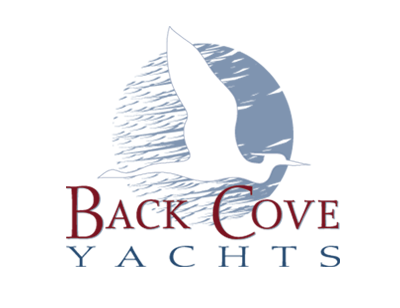
- Motor Yachts
- Owner Resources
- Find a Dealer
Yacht or Boat?: What’s the difference?
Yacht, ship, or boat – which is it.

The English language is full of this kind of intriguing conundrum. Definitions of words like yacht, boat, or ship aren’t always sufficiently indicative of which is appropriate and when. The result is that most of us develop and use our own (unspoken) rules within our boating communities or, when the rules don’t apply, we just wing it!
If ‘winging it’ isn’t your style, or you’re new to the boating community, we have some guidelines to help you along the way to nautical fluency.

When in Rome…
As we mentioned above, everybody has their own ‘rules.’ Moreover, the plasticity of language means that any guidelines have a substantial amount of grey area. So always be aware of those familiar with the vessel in question. If you are invited out on ‘the boat,’ it’s safe to say that is an acceptable term. If a captain or owner refers to their vessel as a ‘yacht,’ then use yacht. When in Rome, do as the Romans do!
There is one bit of unequivocally good news in all this confusion – when it’s yours, you can call it whatever you like!
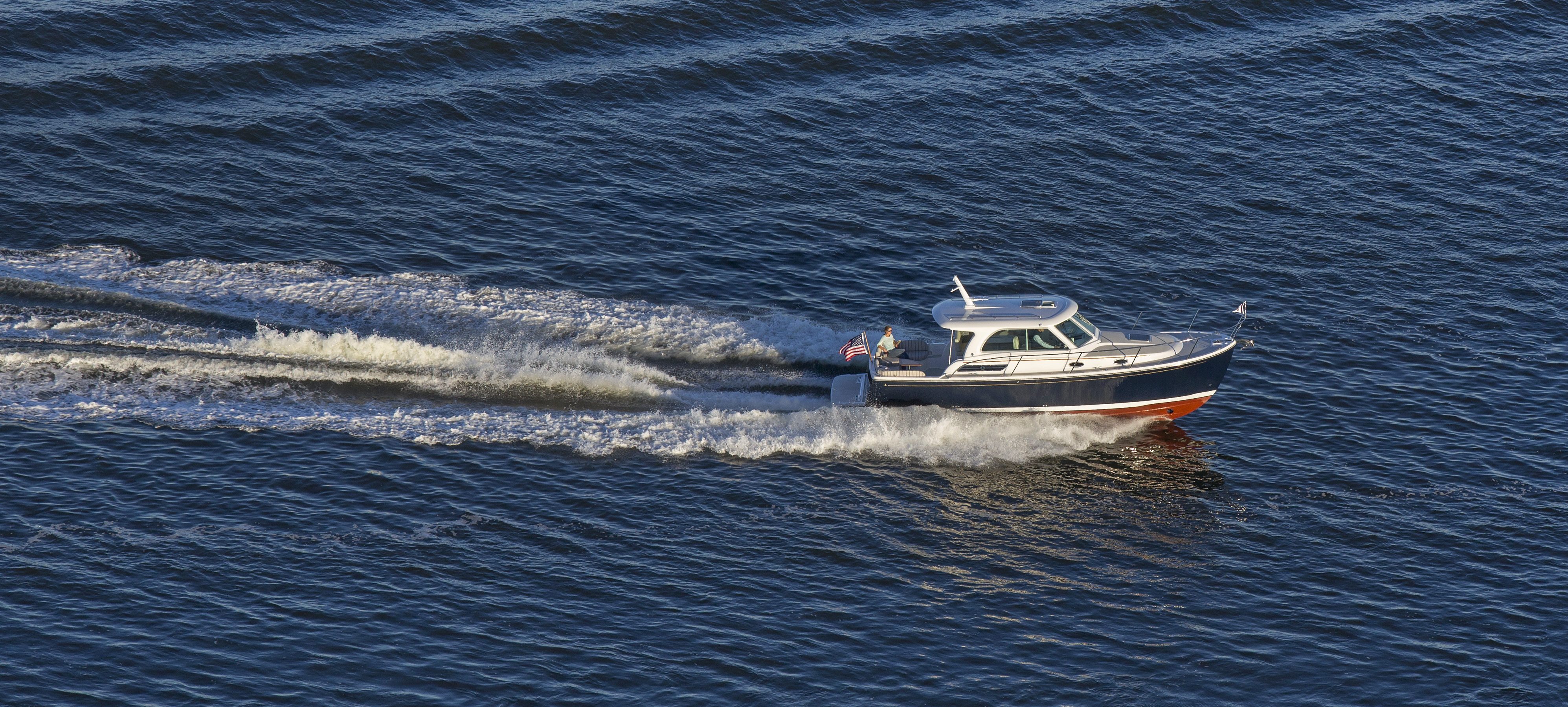
PS – Do you find any other nautical terms confusing or unclear? Let us know in the comments!

Twitter Facebook
Youtube Pinterest
Sign up to receive posts from the Back Cove Blog
- Back Cove Family
- Back Cove Yachts Blog
- In the News
Recent Posts
- Serendipity in Nashville – reuniting a historic guitar with its maker
- New Mercury V10 Verados & the Back Cove 34O
- 2022 Newport International Boat Show Recap
- Celebrating Milestones
- The Newly Redesigned Back Cove 372
Twitter Facebook linkedin Youtube Instagram
©2024 Back Cove Yachts 23 Merrill Drive - PO Box 548 - Rockland, ME - 04841 +1-207-594-8821 Contact Newsletter Press Careers
What's the difference between a 'boat' and a 'ship'?
All dictionaries try to avoid the dread lexicographic condition known as circular defining . This is when one looks up a word such as dictionary , sees that it is defined as “a lexicon ,” and, when looking up lexicon , finds that it is defined as “a dictionary.” Given that we spend a considerable amount of time avoiding this sort of defining, it may come to a surprise to some users to discover that one of the definitions for boat is “ship,” and vice versa.
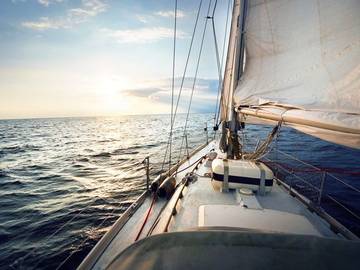
Take to the sea.
This is not actually a case of circular defining, as these seeming examples of synonymy are but one of a number of possible meanings for each word. And we do not define the words in this manner out of a desire to annoy people who love to observe the distinction between these two kinds of vessels. The reason we offer the definitions of “ship” for boat and “boat” for ship is that this is the manner in which a large number of people use the words.
‘What is the difference between a ship and a boat?’ has a good number of answers, but unfortunately most of these are not couched in the type of precise language a dictionary aims for. Sample responses to this question include ‘You can put a boat onto a ship, but you can’t put a ship onto a boat,’ ‘a boat is what you get into when the ship sinks,’ and ‘a boat is the thing you put gravy in.’
If you were to look for precision by asking this question of ten nautically-inclined people in ten different areas it is possible that you would get a wide range of answers, for the exact moment at which a boat becomes a ship varies considerably. We define ship in the following ways: “a large seagoing vessel,” “a sailing vessel having a bowsprit and usually three masts each composed of a lower mast, a topmast, and a topgallant mast,” and “boat (especially one propelled by power or sail)”. Boat has a slightly narrower semantic range, including “a small vessel for travel on water,” and “ship.”
Usage writers appear to have been warning people about these words since the late 19th century; boat appears on James Gordon Bennett’s “Don’t List” in the New York Herald , with instruction to avoid “except in describing a small craft propelled by oars.” However, the distinction between boat and ship had been observed by others well before this.
Mr. Barnes then proceeded to state the distinction between a boat and a ship, and contended that all vessels above a certain tonnage, and which were registered, came under the denomination of “ships,” inasmuch as boats had no register. — The Essex County Standard (Colchester, Eng.), 29 Oct. 1841 ”What do you think, William, is the next gradation?” ”Why, father, is there any thing between a boat and a ship?” ”We are not come to a ship yet, William; we have only spoken of such sorts of vessels as are moved by paddles or oars.” — Isaac Taylor, The Ship, or Sketches of the Vessels of Various Countries , 1834
Despite the fact that we’ve been receiving admonitions about boat and ship for over a century now, many people cheerfully insist on using boat for waterborne vessels of any size. However, few, if any, use ship to refer to small crafts. If you find that you are unable to remember the which is the larger between ship and boat it may help to sing the children’s song Row Your Boat (“row, row, row your ship ” sounds decidedly odd — small oared crafts are almost always referred to as boats ). No matter how many aphorisms we come up with, it seems unlikely that we are going to get much more specific than 'ships are bigger than boats.'
Considering that our language has hundreds of words for different kinds of things that float on the water it is somewhat odd that we should focus exclusively on the difference between only these two. Should you find yourself beset by an angry sailor who calls you out for using boat when you should have used ship you may turn and ask if they know the difference between a xebec and an umiak , a corvette and a wherry , or an argosy and a garvey (the first ones are all ships and the second ones all boats).
The fact that English usage is messy, and has contributed to a use of boat that is somewhat vague, does not mean that there aren't settings where precision is called for. For instance, when you are sailing on someone else's vessel it is polite to always employ the correct terminology. And if you find yourself at a loss about when a boat becomes a ship you should contact your local maritime authority.
Word of the Day
See Definitions and Examples »
Get Word of the Day daily email!
Games & Quizzes

Commonly Confused
'canceled' or 'cancelled', 'virus' vs. 'bacteria', your vs. you're: how to use them correctly, is it 'jail' or 'prison', 'deduction' vs. 'induction' vs. 'abduction', grammar & usage, more words you always have to look up, 'fewer' and 'less', 7 pairs of commonly confused words, more commonly misspelled words, every letter is silent, sometimes: a-z list of examples, great big list of beautiful and useless words, vol. 4, 9 other words for beautiful, why jaywalking is called jaywalking, the words of the week - may 24, flower etymologies for your spring garden.

Boat vs Ship: Navigating the Nautical Distinction and Greatest Debate
Mar 19, 2024 | BOAT TRANSPORT

Boat vs Ship, do you know the difference? Are you as fascinated by the maritime world as we are?
From the romance of high-seas adventures and sailing ships to the utilitarian power of cargo transport, the boats and ships that plow the oceans and rivers are the lifeblood of countless human activities.
In this detailed exploration, we aim to elucidate the often misunderstood lexicon of boating and shipping by dissecting and contextualizing the nuances between these two terms.

Boat VS Ship: Defining Boats and Ships
To the uninitiated, the terms ‘boat’ and ‘ship’ might seem interchangeable, but in maritime parlance, they signify distinct classes of waterborne vessels. A boat leans into a turn while in the water, while a ship leans out while in the water. A “boat” typically refers to a smaller, more modest vessel, which might be deployed for everything from leisurely fishing trips to local transportation.
Get A Quote!

On the other hand, a “ship” is the larger and usually more complex vessels, known for their seaworthiness and often associated with international voyages or specialized missions, such as cargo transport or naval operations.

Boat VS Ship: The Characteristics of Boats
Boats, by and large, are the modest workhorses of the nautical world. They come in a myriad of forms, from canoes and fishing skiffs to mid-sized cruisers. Typically, a boat is navigated by non-professional seafarers and is not designed for transoceanic journeys.
Boats are commonly used for hobbies and recreational purposes, including private yachting, and for the day-to-day activities of those who live near water.
These vessels are generally smaller in size and are characterized by a more straightforward and often times simple construction, reflecting their more localized or recreational roles.
Boat VS Ship: Size Matters… Or Does It?
Conventional wisdom dictates the divide between boat and ship to be based on size, with the former being under a certain length, but this classification varies across regions and traditions.
The United States Navy famously asserts that vessels over 65 feet (about 19.8 meters) are ships, while anything smaller is a boat. This ‘rule of thumb’ guide, the difference between a boat, however, is not universally applicable.
Boat VS Ship: Purpose-Driven Vessels
Boats are often designed with specific activities in mind, whether it’s the agility of a small fishing boat and a ship the seating capacity of a tourist vessel, or the speed and sleekness required in a racing yacht.
Their smaller scale and diverse purposes make them a common entry point into the seafaring world and an emblem of personal freedom and adventure.
Boat VS Ship: Navigational Range
The navigational range of boats is restricted by their size and capacity. While some boats are built to tackle open water, many are designed for sheltered or inland waterways.
This limits most boats in their operational scope and the distances they can safely traverse.
Interstate Haulers can haul your boat within the US! Contact us for an estimate today.

Boat VS Ship: The Characteristics of Ships
Ships are the giants of the water, capable of traversing vast distances and varied environmental conditions.
Unlike boats, the size of ships can sometimes border on imposing, with some container ships and oil tankers exceeding the length of several football fields and resembling floating cities more than vessels.
These leviathans are built for endurance and can carry everything from grains to several thousand people.
Size and Scale
The quintessential feature of a ship is its size. While there’s no definitive threshold for ship requires to, ships are generally understood to be much larger than boats , capable of carrying large cargoes or handling significant numbers of passengers.
The physical presence and operational complexity of ships relative to boats often reinforce this distinction.
Ocean-Worthiness
The distinction of ‘ship’ also carries with it the connotation of seaworthiness — the ability to handle the challenges of the open ocean.
This is why ships are often equipped with more robust hulls, larger engines, and navigational equipment designed to cope with the rigors of maritime travel on an intercontinental scale.
Cargo Capacity and Specialization
Ships are often built with specific types of cargo or passenger capacity in mind. For instance, bulk carriers focus on singular cargoes such as grains or ores, while cruise ships are engineered to provide a high level of comfort and amenities for passengers.
Specialized naval ships, including aircraft carriers, are engineering marvels in their own right, designed for a very defined purpose.
Boat VS Ship: Distinguishing Factors, Legal and Contextual
Beyond mere semantics, there are legal and contextual implications for the usage of ‘boat’ or ‘ship’. In maritime law, distinctions come with varying regulations and operational protocols.
This can affect everything from the qualifications required by crews to the taxes and tariffs applied to the large and small vessel, and its cargo.

Nautical Conventions
Historically, nautical traditions have bestowed ‘ship’ status with a ship and a boat a certain respect or prestige.
A sailor on his ‘first ship’ marks a significant milestone, and naval vessels are categorized as ‘ships’, regardless of size.
Similarly, in the realm of ocean liners and cruise ships, the term ‘boat’ is rarely used due to the grandeur and scale of these vessels.
Small Craft vs. Large Craft
The U.S. Coast Guard and the US Navy employ particular definitions for boats and ships based on size, with practical implications for their missions and operations.
Small craft may be boats in the eyes of the Coast Guard but could be ships for oceanographic research purposes, underscoring the flexibility and subjectivity of these definitions.

Boat VS Ship: Historical Evolution of Boats and Ships
The lineage of boats and ships is as rich and varied as the seas they traverse.
From the reed boats used by ancient civilizations to sailing ships and the galleons of the Age of Discovery, vessels have continually adapted to the needs of their eras.
Advancements in materials, propulsion, and navigation have indelibly shaped the course of maritime history, expanding the capabilities of ships and boats alike.
Navigating the Past
The earliest boats likely appeared in prehistoric times, crafted from natural materials to facilitate travel on water for hunting and exploration.
In contrast, ancient ships were the engines of global trade and conquest, just like the early submarines connecting far-flung empires and cultures.
Technological Tides
The Industrial Revolution brought about significant changes in shipbuilding, with the advent of the steam engine heralding a new era of propulsion.
This was followed by the age of steel and the development of massive cargo ships, leading to standardized containerization and the globalization of trade.
The recent push towards sustainable energy is also influencing the design and operation of modern ships, with trends in the industry pointing towards increased reliance on wind and solar power.

Practical Examples of Boat VS Ship
Want to put theory into practice? A glimpse at specific types of boats and other ships can further elucidate the difference between the two categories.
Here’s a quick rundown of some well-known examples:
Fishing Boats : From the humble dory to the sophisticated trawler, fishing boats are designed to find and catch fish, often with specialized equipment that varies depending on the type of fishing.
Personal Watercraft (PWC) : Also known as jet skis, these small motorized craft are a popular choice for recreational use, offering speed and excitement for riders on lakes and coastal areas.
Sailboats : Whether a small dinghy or a majestic ketch, sailboats harness the power of the wind for propulsion and are often associated with recreational and competitive sailing.
Kayaks and Canoes : Utilized for millennia by indigenous peoples for transportation, fishing, and hunting, these small, human-powered vessels are now popular for recreation and competitive sports.
Yachts : Often perceived as symbols of luxury, yachts vary in size but are typically boats used for personal pleasure, racing, or sometimes as a temporary residence.
Utility Boats : These are versatile boats used for various purposes including but not limited to towing vessels, salvage, and support for larger ships or operations at sea.
Cargo Ship : Bulk carriers, container ships, and oil tankers fall under this category, built to transport large amounts of cargo across oceans and rivers, playing a vital role in global trade.
Cruise Ships : These floating resorts are designed to provide a luxurious and entertaining experience for passengers, typically traveling between ports of call as part of a pleasure cruise.
Warships : Naval vessels serve the military, with roles ranging from defense and escort duties to the deployment of aircraft and amphibious operations. They embody some of the most sophisticated technology and strategic importance in the maritime world.
Research Vessels : Designed specifically for scientific research purposes, these ships are equipped with advanced technology to study marine biology, oceanography, geology, and more.
Container Ships : A backbone of global trade, these ships carry cargo in large containers, exemplifying efficiency in the modern supply chain.
Icebreakers : These are powerful ships designed to move and navigate through ice-covered waters, providing safe passage for other boats and ships in polar regions.

Boat VS Ship: The Semantic Sea Change
One must remember that the nautical lexicon is not static, with semantics shifting as vessels and cultural mores evolve.
The distinction between boats and ships remains fluid, shaped by its users and the needs of maritime activities worldwide.
Acknowledging the historical, legal, and practical dimensions of this nautical dichotomy can deepen our appreciation for the vessels that ply our planet’s waters.
In conclusion, while the differentiation between boats and ships might seem pedantic to some, it is significant in terms of functionality, tradition, and even emotion.
Whether you’re a weekend sailor, a naval officer, a marine engineer, or a landlubber with a love of the sea, understanding the language and culture that surround these vessels is crucial to fully appreciating the monumental role they play in our global ecosystem.
Looking for something specific?
You May Also Like

uShip vs Interstate Haulers: The Great Hauling Debate
Apr 15, 2024 | TRANSPORTATION , BOAT TRANSPORT , RV Transport
uShip vs Interstate Haulers: Which is better? In the burgeoning industry of transportation and shipping, two heavyweights stand out as the epitome of service providers: uShip and Interstate Haulers. Each company has forged its unique path in the logistics landscape,...

The Rising Industry Leader: PopSells – Where Every Dock Begins a Journey
Apr 10, 2024 | Partners
Have you heard of PopSells? In the vast world of online marketplaces, tailored solutions are key to attracting a loyal and dedicated clientele. PopSells, the revolutionary platform that exclusively caters to the boat and RV community, is making waves — quite literally...

Marine Max: Elevate Your Boating Experience
Apr 5, 2024 | Partners , BOATS
Looking to buy a new boat? Check out Marine Max! Boating isn't just a leisure activity—it's a lifestyle. With the wind in your hair and the sun on your face, the open water offers a sense of freedom unlike any other. For the discerning boating enthusiast, Marine Max...
Privacy Policy
- Pontoon Boats
- Personal Watercraft
- nauticalknowhow
- Nautical Knots
- Tools and Calculators
Boat vs Ship: What’s the Difference?
The internet is full of dictionaries with different definitions of what is and is not a boat. You may be surprised (or maybe not) to see that some describe a ship as a boat and a boat as a ship. Here are two ways to define both boat and ship.
Boat Definitions
- a vessel for transport by water
- a small ship
Ship Definitions
- a vessel, especially a large oceangoing one
- a boat, especially one propelled by power or sail
While some definitions rely on using one term to define the other, some of them also include a reference to size, which is at least mildly helpful and is at the core of the difference between a ship and a boat.
Large Vessel vs Small Vessel
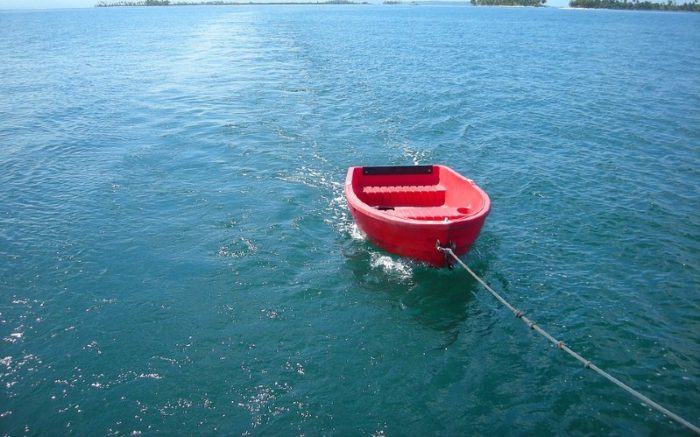
Generally speaking a ship is a large vessel and a boat is a smaller one. Of course, size is pretty relative. If an 18 foot vessel is a boat is a 200 foot vessel a ship? What about a 500 foot one? Where’s the line between ship and boat?
There’s a popular saying that goes “a ship can carry a boat but a boat can’t carry a ship.” Another popular one is that a ship leans left when it turns right. A boat leans right when it turns right.
According to some definitions a ship is a vessel weighing at least 500 tons. A boat would therefore be anything that is smaller in size, which encompasses most leisure craft and the sorts of vessels any of us are likely to be using at sea.
Operating Ships vs Boats
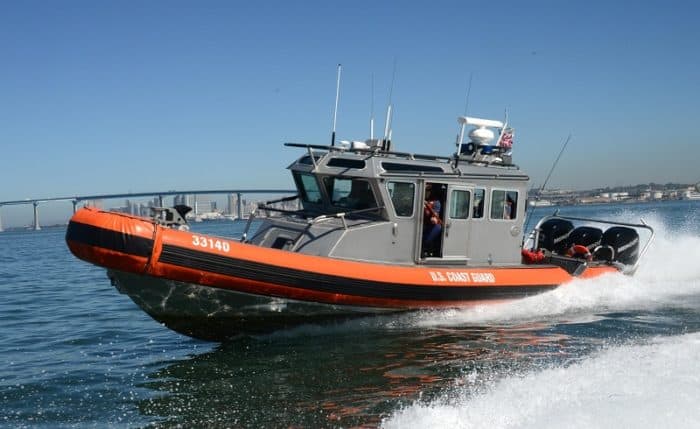
Ship Operations
Ships have a lot of serious and heavy engineering going on. They need to be operated by qualified technicians, not to mention all the additional systems from communications to navigation that are all highly specialized as well and not something an average boater will have the knowledge to operate.
Larger vessels like ships all operate using extreme amounts of power to offset the incredible size of weight. A Nimitz class aircraft carrier has a small nuclear reactor to keep it in motion. The Wonder of the Seas has six marine-diesel sets of engines. Each set is made up of three 16 cylinder engines and three 12 cylinder engines. The 16 cylinder engines can each burn through over 1,300 gallons of diesel fuel per hour. Compare that with what the outboard motor on something like a bass boat may be burning through. The fuel used to start the cruise ship the Wonder of the Seas could very well be more than your boat will ever use.
Sailing ships do exist though they are less popular these days. In the time before commercial vessels with big engines out in the deep water these would have three or more masts, and travel the oceans on sails rather than engine power.
Boat Operations
Boats have a variety of ways that they can be operated. You paddle a small boat like a canoe around, after all. If you have a catamaran you can hoist a sail and use wind power or you can use a motor to propel it. Even those boats that do operate under power have some variety as well. Outboard, sterndrive and inboard engines are all possibilities. There are also jet boats that use jet propulsion rather than motors with propellers for many smaller vessels.
Ship vs Boat Capacity
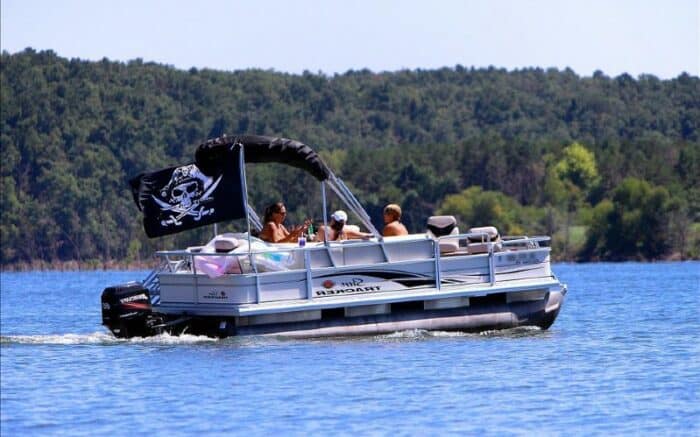
The size of a ship versus the size of a boat is key to understanding how they are used.
Ship Capacity
The largest shipping container ship in the world is over 1,300 feet long and weighs 240,000 tons. In 2021, a ship of similar size broke a world record when it carried 21,710 20-foot long shipping containers carried aboard in a single journey.
Ships carry a lot. That can be cargo as in the case of that massive shipping container ship or even crew and passengers. The US Navy Nimitz class aircraft carriers are capable of carrying a permanent crew of 5,680 people at one time. That said, Royal Caribbean has a cruise ship called the Wonder of the Seas that can handle 6,988 passengers when maxed out plus 2,300 crew for a total of 9,288 people on board.
Clearly, a ship is a vessel built to handle large numbers of people with a large cargo capacity.
Boat Capacity
The largest yachts may be able to accommodate a large number of people. Some mega yachts are so big they even have room for smaller boats to dock inside of them. These are, obviously, very rare. Most boats are not designed for cargo or massive crew transport. Instead, their purposes range from cruising to fishing to search and rescue. The cargo and crew capacity is considerably smaller than a ship.
Ship vs Boat Design and Layout
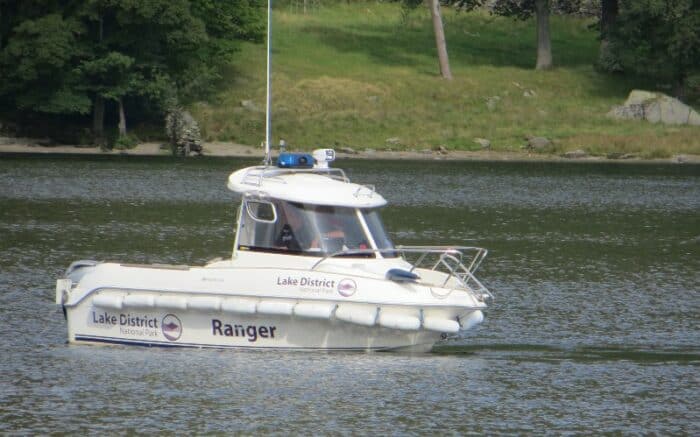
Boat Design and Layout
A canoe can literally be a hollowed out log, so there’s something to be said for the simplicity of a boat. As they get more complicated they can have cabins and berths, pilothouses, fly bridges, and more. But even the most luxurious of houseboat or yacht will still be fairly simple overall. Living quarters, operational areas, an engine room, a deck. That’s about it.
Ship Design and Layout
The Wonder of the Seas has an actual park with 10,000 real plants growing in it. There’s a ten storey zipline on that ship somewhere, not to mention an ice rink. And that’s just the leisure areas. If we go back to the Nimitz class ships, remember, these have nuclear-powered engines in massive engine rooms. There are aircraft hangars below decks to hold the planes.
Ships are vastly more complex and their layout can often be similar to a city built in three dimensions. Put another way, it’d be all but impossible to get lost on a boat. The same can’t be said for some of these massive ships.
Owning Ships vs Boats
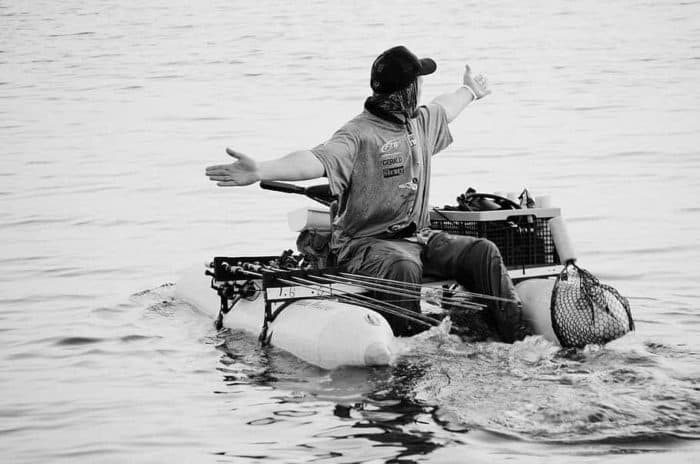
Owning a Ship
There’s technically no rule saying you can’t own a ship, or at last certain kinds of ships. But let’s be honest, most people do not and will not ever own ships. The largest ships cost hundreds of millions of dollars. Ships are, by and large, used by organizations which may be military, governmental, or commercial.
Owning a Boat
Boats are designed for small scale use and are typically owned and operated by individuals and smaller businesses. Most reasonable-sized boats may cost am owner a price within range of a car or, on the most luxurious end, a house.
Types of Ships vs Types of Boats
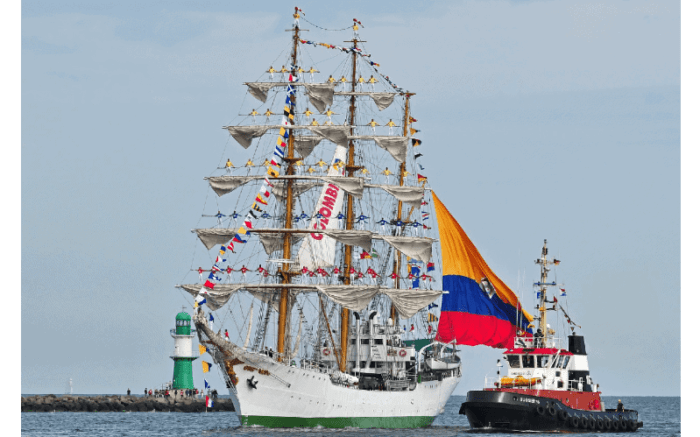
Common Ship Types
These vessels are most often seen in the open waters of the ocean.
- Naval ships
- Cruise ships
- Shipping containers
- Oil exploration or drilling ships
- Construction vessels
- Offshore barges
- Jack Up and Crane Ships
- Roll on/Roll Off ships
Common Boat Types
In contrast to ships, boats chiefly include many of the vessels you’ve likely seen in lakes, rivers and coastal areas including:
- Fishing boats
- Pontoon boats
- Patrol craft
One point of distinction when it comes to the difference between a ship and a boat rests on submarines. Any vessels like a submarine that operate underwater are generally considered boats.
Is a Cruise Ship a Boat? Areas of Operation
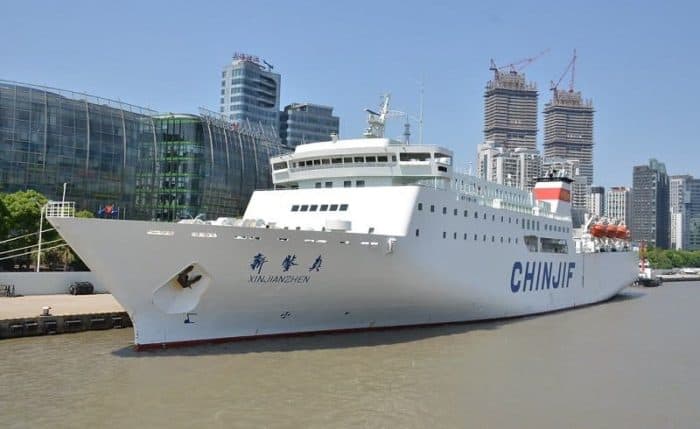
Ships travel the high seas. A cruise ship isn’t going into coastal waters along a beach unless it’s docking or you’re about to see how a ship sinks. Royal navy vessels don’t usually show up in the Thames over in England, for instance. Likewise, your jon boat should never be in an international shipping lane.
In other words, boats typically operate in restricted areas near coasts and along inland waters like the Great Lakes. Ships are out on the open ocean for long periods.
The Bottom Line
The key things to remember about a boat are that they are:
- Smaller than ships
- Able to hold far less crew and cargo
- Not as expensive as ships
- Often used for recreational purposes by individuals or smaller organizations
- Chiefly used on inland and coastal waters.
The key things to remember about ships are that they are:
- Much larger than boats
- Able to carry massive crew and cargo
- Extremely expensive
- Often used for commercial, government or military purposes
- Chiefly used in open waters
While both boats and ships are technically vessels that travel by water, the distinct differences make it clear that they’re pretty different. But whether you’re on a boat or a ship, make sure to stay safe and have fun.
My grandfather first took me fishing when I was too young to actually hold up a rod on my own. As an avid camper, hiker, and nature enthusiast I'm always looking for a new adventure.
Categories : Boats
Leave a Reply Cancel reply
Your email address will not be published. Required fields are marked *
Save my name, email, and website in this browser for the next time I comment.
More in Boats

What Is A Gunwale?

131 of the Best Hawaiian Boat Names

167 Patriotic Boat Names

The 138 Best Boat Names for Dog Lovers

The People’s Poncho Review and Ratings

Oru Lake Kayak Review

About Boatsafe
Established in 1998, BoatSafe is your independent guide into the world of boating, fishing, and watersports. We provide expert insights and detailed guides to help you find products tailored to your needs and budget.
Contact Boatsafe
- Address: 4021 West Walnut Street. Rogers, AR 72756
- Phone: (479)339-4795
- Email: [email protected]
Site Navigation
- How We Test
- Corrections Policy
- Privacy Policy
- Terms & Conditions
- Editorial Policy
- Affiliate Disclosure
Our Reviews

All content is © Copyright 2024. All rights reserved.

Boat Vs Ship
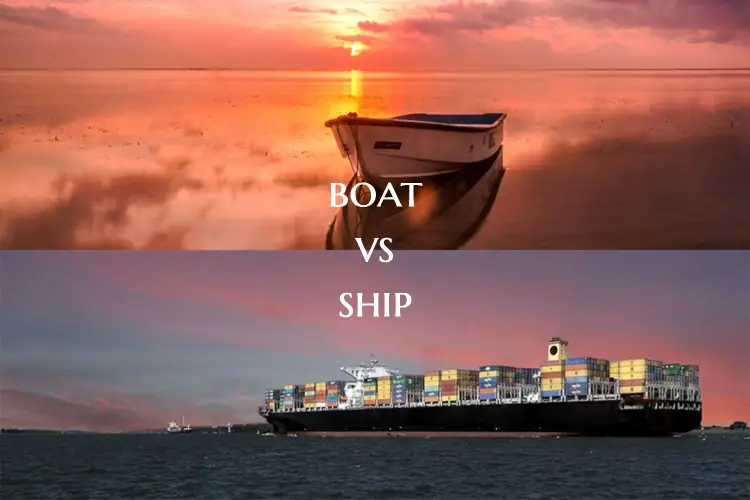
Boat vs Ship. What’s the difference between a boat and a ship? After all, both – boat or ship can be used to ferry people and cargo. If this question has also bugged you, this article will try to make the difference clear to you.
Archaeological excavations have led to the discovery of log boats that were built some 7000-9000 years ago. Near Kuwait, a 7000-year-old boat constructed from reeds and tar was found. Ancient Egyptians knew how to use planks of wood to make a ship hull as since early as 3000 BC. They were able to use reeds and grass to keep the planks together. In his books the Greek geographer Agatharchides wrote of ship faring being popular among early Egyptians.
With the onset of the Renaissance navigational technologies improved. The carrack was further developed towards the end of the 14 th century. Now it started having towers on the bow and stern.
In the 15 th century, the caravel was introduced which could sail closer to the wind and became very popular. In the 16 th century, galleons started using freeboard and free ports. The English made some modifications in their vessels to maximize firepower. This came in very handy in their victory against Armada in 1588.
The ship of the line became the most prominent naval ship of the Europeans. At 56m it had seventy-four guns and was capable of carrying a crew of 800 sailors and soldiers. In the 19 th century, the
Clippers became popular for its speed but were soon replaced by steamships that started using the Suez and Panama canals as commercial routes.
Since then the functionality and construction of boats and ships have undergone many changes where the lines differentiating them have become more and more blurred.
First, let’s know what is a boat and a ship.
A boat usually means a small vessel for travel on water. A boat is a watercraft of modest size which is meant to provide passage across water bodies. These water bodies are usually inland such as lakes and rivers.
A ship simply means a large seagoing vessel. A ship is a large watercraft that had at least three square-rigged masts and a full bowsprit. Ships may also be used on lakes, seas, and rivers. They are utilized for many activities, war, transport of people & goods, fishing, leisure, and rescue missions.
You may have heard of the phrase ‘ a ship can carry a boat, but a boat can’t carry a ship ’. But that is probably the vaguest answer that you can give to someone asking you about the difference between a boat and a ship.
Though a popular belief and a general rule of thumb say that the bigger ones are ships and the smaller ones are boats, big and small are relative terms. Some yachts, ferries, police boats, and fishing boats are capable of carrying smaller boats like lifeboats and dinghies.
This doesn’t necessarily qualify them to be called ships. At the same time, a large container ship can be carried on an even bigger ship. However, that doesn’t take away the status of the ship from the vessel that is being carried.
Hence the method of differentiating two types of vessels solely based on their size doesn’t seem to be the most logical approach.
2. Propulsion
The ‘ three-plus square-rigged masts ’ rule is in accordance with the size of the vessel to a certain extent. This is because a boat that is usually considered to be small cannot use more than three large masts. Even if it does use, it cannot benefit from it because of its size. This is because the sheer weight would slow down the ship. Such complexity would also result in inefficiency.
On the other hand, ships that are considerably bigger than boats can benefit from more sails as their total weight would be only a fraction of that of the ship.
Moreover, the ships can accommodate more crew members that would help to maintain the complex system of rigged masts.
Some boats can be propelled merely by human force through the use of oars.
A ship, on the other hand, can never be propelled by human force. It needs a dedicated engine(s) to move.
It is interesting to note that the U.S. Navy’s official naming scheme for submarines sees the use of the initials USS standing for United States Ship, irrespective of the size. Seamen are said to refer to submarines as ships regardless of the size.
This is probably a safer way of differentiating a ship from a boat as ships are generally used for navigating on the oceans and high seas.
A ship’s chief use seems to be the transportation of goods ( cargo ) through larger distances across the ocean.
People don’t usually take a ship to travel from one place to another, not when they have access to faster modes of traveling like airplanes.
Ships, on the other hand, are capable of carrying huge loads and the cost of operation is comparatively lower than airplanes.
However, they take way longer to reach a place when compared to planes.
Boats, on the other hand, are used mostly on restricted water areas (coastal and inland) like lakes and rivers. However, some boats are made such that they are operable on the seas as well. A boat can be used for a variety of things that ships are not.
Boats are mostly used for recreational purposes. These are used for all kinds of water sports. They are also used for fishing and for ferrying people and goods over short distances. Ships are mostly used for transportation (Exceptions being – Yachts & Cruise ships) .
Ships are designed keeping in mind that they need to be used in deep waters and have to be operable for longer periods of time. Compared to ships they lack the fuel and cargo capacity to independently operate for a long span of time.
4. Nature of Crew and Crew Capacity
One of the main points differentiating a boat from a ship is the nature of the crew. If a vessel has a permanent crew with a commanding officer, then you are looking at a ship.
But on the other hand, if the vessel has no permanent crew and people are hired only at the time of operation, it is safe to assume that it is a boat you are dealing with.
5. Navigation
Ships have complex systems in place for navigation with a dedicated crew to run, handle, and maintain all aspects of such equipment. This necessitated by the fact that ships have to travel across oceans and seas, under difficult weather conditions for which they need high-tech assistance.
Boats are mostly much simpler watercrafts. They are mostly used for recreational or fishing purposes for which they don’t need very complicated and specialized instruments for navigation.
6. Areas of Operation
Ships as we know by now travel great distances across the seas and other water bodies with great depth. Ships carry cargo such as goods, oil, and LNG from one end of the globe to another over high seas.
Boats operate over a smaller span of an area like rivers, lakes, or coastal areas. There are different kinds of boats for different functions.
8. Cargo and Passenger capacity
One of the biggest differentiators is that ships can carry a large amount of cargo or passengers. Like a cruise ship can easily carry a couple of thousand passengers.
Boats in contrast carry low load and passengers. A ferry boat can carry hundreds of people but most of the boats dont.
Here is a quick and easy way to differentiate between a ship and a boat. If the vessel’s captain gets offended by you calling it a ‘boat’ then probably, by all means, it is a ship, and if you don’t want to be in the captain’s black book, you might as well believe it from your heart and start calling it a ship too.
If the captain doesn’t seem to mind you calling it a ‘boat’, then it is definitely a boat.
Similar Posts
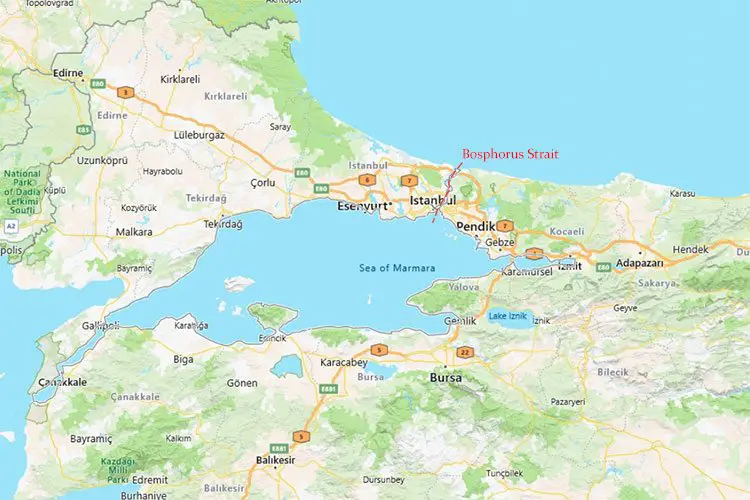
Bosphorus Strait: 10 Mind-Blowing Facts
The Bosphorus strait or also known as the Strait of Istanbul is located in the northwestern part of Turkey and connects the Sea of Marmara with the Black Sea. It is a very narrow and natural strait but holds an international significance as it connects different seas making itself an important shipping route. The strait…
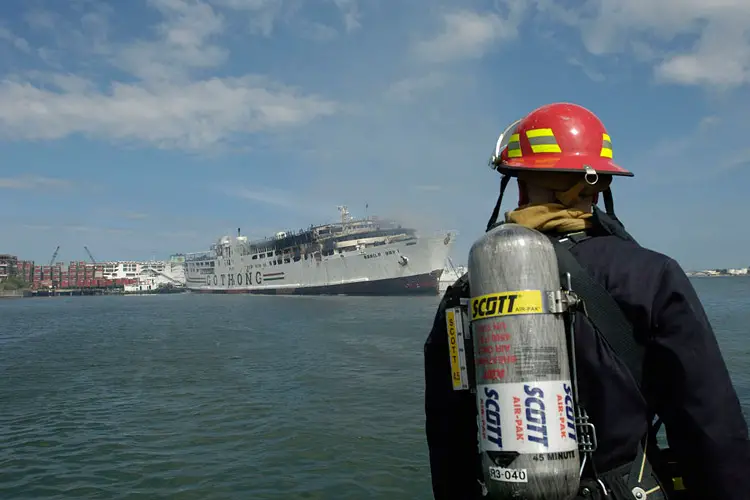
Different Types of Fire Extinguishers Used on Ships
In junior school, you might have been taught that you should not use water to douse a fire that has been caused by electricity and use sand instead. This is because the method of extinguishing fire varies with the source of its origin. Types of fire extinguishers used on ships are based on what was…
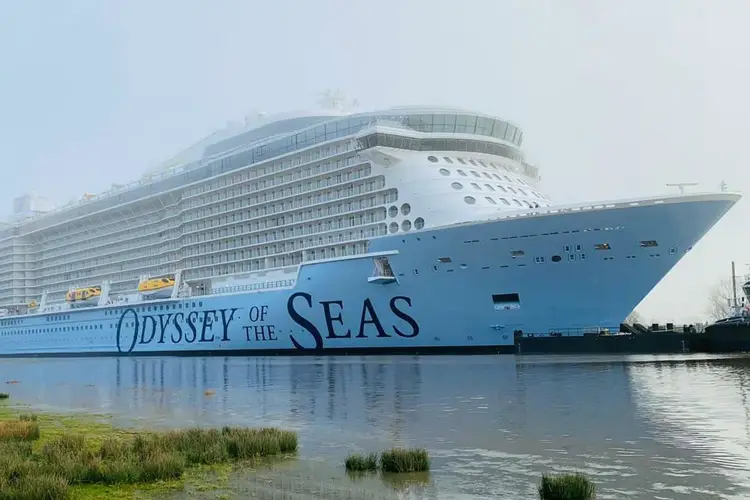
Odyssey of the Seas Deck Plan
Odyssey of the Seas is the second Quantum Ultra-class cruise ship and the last of the class owned by Royal Caribbean International. It is the 2nd newest ship out of the Royal Caribbean fleet. Pics courtesy: https://www.royalcaribbean.com/ Odyssey of the Seas Deck Plan Deck 3 Deck 4 Deck 5 Deck 6 Deck 7 Deck 8…
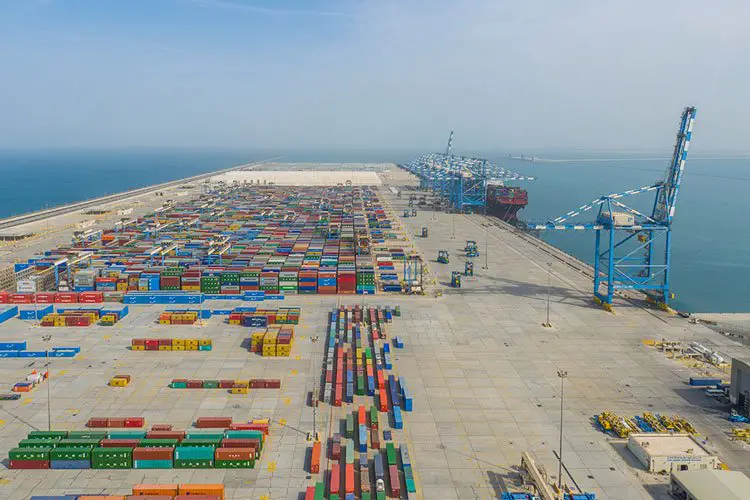
Top 10 Biggest Ports In UAE
Let us first understand what ports are before moving on to the top major ports in UAE. A seaport is a nautical facility with one or more wharves where ships, including freight and passengers, can load and discharge cargo and passengers. It is usually found on the seashore or in an estuary, however, some well-known…
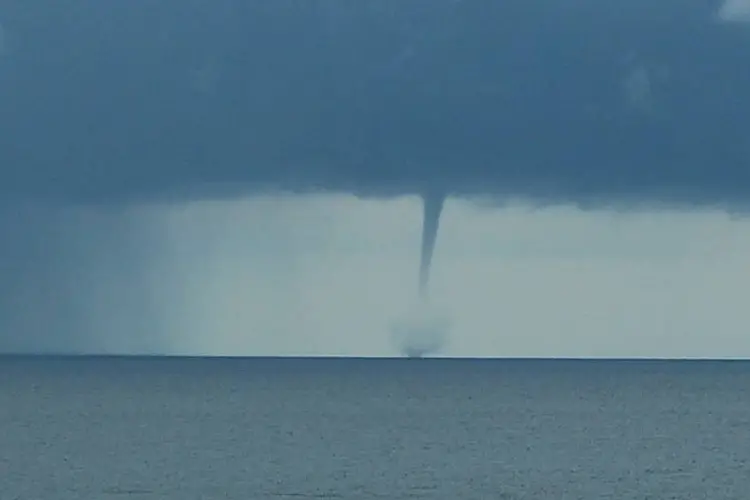
6 MINDBLOWING Facts About Waterspouts At Sea
Waterspouts are tornadoes that form over water or move from land to water. These tornadoes look similar to a land tornado. Appearing as a funnel-shaped cloud, a waterspout is usually a non-supercell tornado over water. These tornados are not as powerful as the ones we see on land. Most of them are just rotating columns…
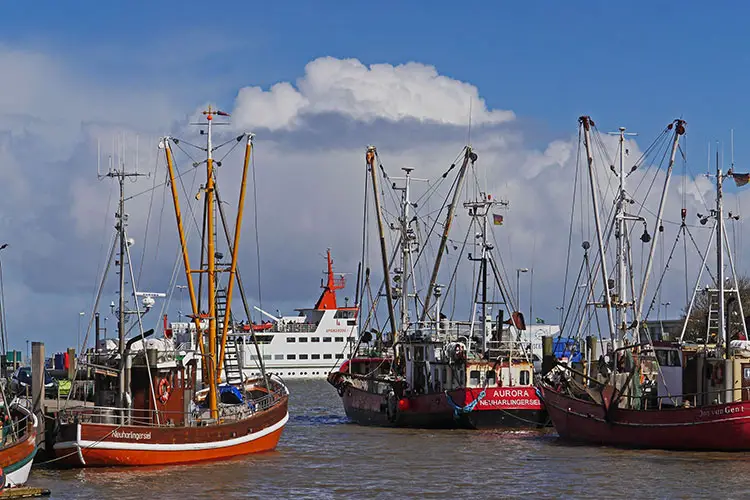
Vessel Monitoring System (VMS)
What Is A Vessel Monitoring System? A Vessel Monitoring System (VMS) is defined as a communication system used to monitor, control, and survey fishing activities, usually commercial. It is employed in almost every fishing vessel in the world today. This article discusses the importance of the vessel monitoring system as an easy and reliable way…
And yet, any US submarine officer or crew member will tell you that their commissioned vessel is a “boat” and not a “ship”. Even though some carry smaller manned subs.
In this case, it is purely a matter of US Navy convention, and not a technical definition. Submarines were originally carried by ships, not independent, and where thus “ship’s boats”. But even though that period only lasted about 30 years, the custom stuck.
The USBN Ohio is a boat, not a ship.
Good explanation. I always believed that boats are small and ships are big. That’s the only difference man!
Nice… You explained very well the difference between a ship and a boat. You covered all aspects to differentiate it.
Leave a Reply Cancel reply
Your email address will not be published. Required fields are marked *
Save my name, email, and website in this browser for the next time I comment.
This website uses cookies to improve your experience. We'll assume you're ok with this, but you can opt-out if you wish. Read More

Boat Vs Ship: What's The Difference?
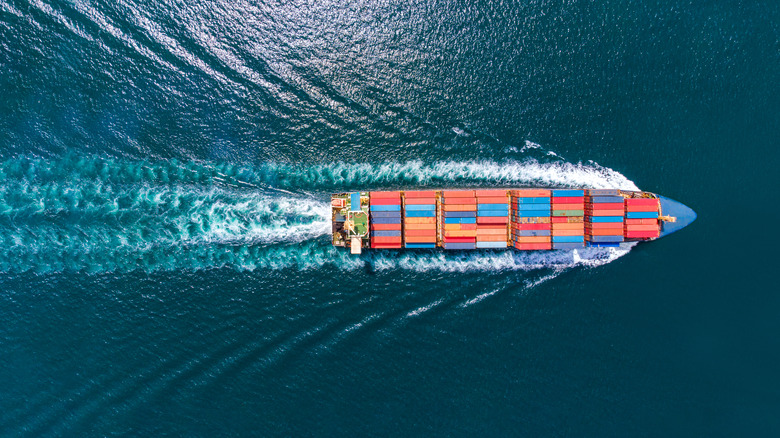
The English language is complicated and can be difficult to learn. A lot of words have tricky, nonsensical spelling, or they have multiple contradictory meanings. Synonyms add to the complexity and create confusion because even the words with the closest dictionary definition can have different meanings when given cultural context.
One example of that last issue is " ship " and "boat." The two words are similar enough: both refer to vessels that float on water and carry cargo or people from one place to another, and the Merriam-Webster Dictionary says the two words are a rare example of what's known as circular defining, where two words define each other. A boat is described as a type of ship, and a ship is described as a boat.
But there are technically some distinctions between the two, even if it's hard to tell at a glance. Here are a few ways to help you identify what's a boat and what's a ship .
Size matters
One of the easiest ways to tell a boat from a ship is to consider the size of the vessel you're looking at. A common saying goes like this: "You can put a boat onto a ship, but you can't put a ship on a boat" (via Merriam-Webster Dictionary ). But there are exceptions to that rule. Even large freight ships can be carried by specially designed ships, and some boats are too big to easily fit on smaller ships. Maritime Manual explains this with the example of a ferry boat. A ferry boat can carry a lifeboat, but that doesn't make it a ship.
There are more specific ways to define the size of a ship that can help. According to Merriam-Webster Dictionary, a ship is large enough to have at least three large masts. A boat, meanwhile, has fewer stipulations. The dictionary defines it as "a small vessel for travel on water." If a vessel is small enough to row with oars, for example, it's probably a boat.
Location, location, location
There's another major difference that can help narrow down the categories. Boats and ships usually don't operate in the same areas, according to Marine Insight . Ships are permitted to be "seafaring" vessels, or to operate in the open ocean. A boat would probably be restricted to smaller, less dangerous waterways (via Marine Insight).
Ships move cargo from continent to continent across the ocean, where boats primarily work on inland lakes and coastal areas, according to Marine Insight. Boats usually operate to move people around across short distances, while ships often focus on cargo and travel farther (via Maritime Manual ). Ships can still transport people, according to Maritime Manual, but it's less frequent now that there are faster options like planes to choose instead.
Again, there are exceptions to the rule. Some boats can operate in the sea, and some larger ships need to move goods through more restricted waterways (via Maritime Manual).
How they move
Ships are designed for more long-term journeys across bigger distances, according to Marine Insight . That means they rely on more technology than a standard boat, especially for navigation and power. A boat can use oars, sails, or motors, according to Marine Insight. But a ship has to use propulsion from larger engines. A boat can use propulsion engines, according to Marine Insight, but they won't be the size or power of what you'd find on a ship.
Ships also tend to be built differently than boats because of where they operate. According to Veterans Breakfast Club , a ship is probably going to have a "V-shaped hull" to move more easily through deeper waters. A boat doesn't need that, so it may have a flat bottom for shallower water. That's not always true, but it's one rule you can use alongside many others to determine what you're looking at (via Veterans Breakfast Club).
Who's in charge
A major giveaway for whether you're on a ship or a boat might not even be the vessel itself. You can actually tell which one it is based on the crew manning the vessel. A ship, because of its more complicated operation systems and bigger size, requires a bigger crew and a captain to direct them, according to Marine Insight . If the ship is full of busy people checking the status of machinery and engines, it's probably a ship.
A boat, on the other hand, usually requires fewer people to operate it. Veterans Breakfast Club puts it this way: "A ship has a commander and a crew. A boat just has whoever is on it at the time." The crew of a boat might also be newer hires, according to Maritime Manual , who were hired at the time the boat began operating. A ship usually has a permanent crew dedicated to it.
What about submarines?
If you're trying to tell the difference between boats and ships, you might not think of the vessels that operate underneath the surface. But they play a part in this debate, too. Technically, at least with the United States Navy, they're classified as a ship regardless of their size (via Maritime Manual ). But many of those who work on and operate submarines will refer to them as "boats" anyway, according to Veterans Breakfast Club . They don't follow many of the criteria that classify a boat or a ship, so what it is really depends on who you're talking to.
That's true for boats and ships, too. Many of the linguistic differences between the two can vary depending on where you are and what the cultural norms are. But for the most part, using size, area of operation, crew, and other factors, you can make a pretty educated guess that will put you on the right track.
What’s the Difference Between a Boat and a Ship?
By matt soniak | jan 22, 2013.
The Supreme Court ruled last week in the case of Fane Lozman vs the City of Riviera Beach, Florida . They decided that Lozman’s 60-foot, two-story, motorless, rudderless floating home was not a boat or a vessel, and hence should not have been seized under maritime law and destroyed by the city.
With the line between house and boat a little bit clearer, reader Steve asked us to clarify something else: “What defines a boat , versus a ship ?”
One of the quickest ways to reveal yourself as a landlubber is to refer to a ship as a boat, but there’s no absolute distinction between the two, and even experienced mariners rely on local custom and usage to differentiate them.
Back in the Age of Sail , a ship was pretty well defined as a vessel with three or more square rigged masts. As different methods of power generation replaced wind and sail, the ships of old became more specifically known as “sailing ships,” and the usage of ship broadened to cover a wide, ill-defined variety of vessels.
One thing that sets a ship apart from a boat is size. According the U.S. Naval Institute, a boat, generally speaking, is small enough to be carried aboard a larger vessel, and a vessel large enough to carry a smaller one is a ship. Or, as Steve says his Navy Lieutenant father put it to him, “You can put a boat on a ship, but you can’t put a ship on a boat.”
Now, this Naval convention is a good rule of thumb most of the time, but there are a few exceptions, among both naval and civilian vessels. Some yachts, ferries, tug boats, fishing boats, police boats, etc. can carry small lifeboats or dinghies, but they usually don’t graduate to ship status because of that. On the other hand, a large container ship or the USS Cole can be carried aboard an even bigger ship without getting demoted to a boat.
The U.S. Navy seems to want to have it both ways with their submarines. One component of each vessel’s official name is USS — that is, United States Ship —but seamen, the Naval Institute says, usually refer to submarines in general as boats, regardless of size.
Another factor the Naval Institute considers is the vessel’s crew, command, and use. If it has a permanent crew with a commanding officer, it’s usually a ship. If it’s only crewed when actually in use and has no official CO, then you’re probably dealing with a boat. Ships are also usually intended and designed for deep-water use and are able to operate independently for long periods of time. Boats, meanwhile, lack the fuel and cargo capacity for extended, unassisted operation.
Again, though, there are some exceptions in actual usage. Most commercial fishing vessels, for example, are large and can go out alone on the open ocean for weeks at a time. They’re almost always called boats, though, and rarely “fishing ships.”
Without any hard and fast rules about boats and ships, we humbly suggest another loose guideline that will ingratiate you to the captain of any sort of vessel: Call it whatever the skipper wants you to call it.

Boat vs Ship | 8 Big Difference Between Boat And A Ship
Last Updated on June 4, 2020 by Amit Abhishek
The difference between the boat and the ship or simply “Boat vs Ship” is one of the fascinating questions of all times. A lot many people are confused about what they really mean (‘Boat’ and ‘Ship’). Both being a sea-going vessel, it’s hard sometimes to know whether its a boat or a ship?
Traditionally people use to differentiate ships from boats based on their size. But with time it became hard to answer just by looking at its size as there are always some exceptions.
Think of large commercial fishing vessels which are still considered as boat irrespective of their large size. They might have a separate engine room too but still called a fishing boat.
Yes, it will be a larger boat but that would still be a boat.
One can easily laugh at you for describing a boat as a ship or vice versa. But still, everyone seems confused when they are asked to describe Why?
That is just why to describe boat vs ship or their key difference; you will hear simple logic like; a vessel small enough to be carried on large water vessel is a boat.
While a water vessel that is sufficiently big to hold several of such boats on its deck is called a ship. It may be kind of right by nor a 100% perfect answer. So to better understand the difference; we will break it into a number of deciding factors required to be taken into consideration.
1 ) Definition for Boat vs Ship
2 ) difference in size, 3 ) various types of boat vs ship, 4 ) area of operation, 5 ) its total capacity, 6 ) design and construction, 7 ) crew size, 8 ) propulsion machinery, boat vs ship | 8 difference that makes them unique.
Not just they differ in the way they are conveyed or refereed to but also what they represent. Both boats and ship represents different things when used in general English.
So what’s better be to differentiate boats from ships by using their basic definition given in books and understood by many.
Boat: it is defined as a vessel capable of floating on water such as river, ocean, sea, pounds and are of less than 500 tonnage. Generally, they carry small amount of goods and passengers from one place to another over a small distance. They are commonly related to entertainment, goods, and fishing.
Ship: They are defined as large complex vessels capable of sailing across the oceans and are of more than 500 tonnage. They generally work in deep waters powered by large marine engines. They are simply large, robust and strong vessels that carry large goods, perform war efforts, carry people and transport raw materials.
Traditionally men differ boat from ship based on their size. Thanks to the phrases such as “You can carry boats on ship but not a ship on boats”.
Small vessels are generally considered as boats while the bigger ones as ship. But technically any vessel more than 500 tonnage with sufficient crew and cargo capacity is a ship irrespective of its size.
For example, the records for the worlds smallest ships goes to “ Skorpios “; which is a typical cruise ship of just 1200 GRT operated by company “ Cruceros Skorpios “.
This ship was just 70 meters in length and 10 meters wide and looks just like big fishing boats from a distance.
If it wasn’t be its 1200 GRT weight including with the crew capacity of 108 it would have been called a large boat.
There are various types of vessels around for transportation on waters. One can be an aircraft carrier, battleship, cruiser, cruise, drekar, ocean liner, cargo, tanker; fishing, catamaran, Dingy, yacht, banana, lifeboats and many more depending upon their role, capacity, and comfort.
When looking for boat vs ship the least I expect from you to know; all the different types of boats . Knowing them helps well understand how they are different than a merchant, cruise or naval ship such as an aircraft carrier.
You might traditionally call them as what they are, such as cruise ship and lifeboat. But a boat and ship can be categorized in the following main types:-
- Hand Propelled boats
- Sailing Boats
- Motor Boats
- Fishing Boats (80%)
- Fishing (20%)
- Inland/Ocean Recreational Passenger vessels (Cruise Ships)
Generally, boats are what that is used in restricted waters close to shore and under low sea conditions. This means they can be used in places where ships can’t such as in sallow waters and thinner channels.
Vessels like Kayaks, Ferry, Tug, sailboats, pontoon fall in this category as they work just like the off-road on road bikes; switching there operation area from large lakes, rivers to shores.
On another hand, these mammoth ships operate in high seas and move across oceans to transport goods and people. They are also used for national security and maritime security; as used by different navy around the world. These vessels include Ro-Ro, Cruise, Container, Tanker, Aircraft Carrier, etc.
In the military, the ships are used for long-range targets while the patrol boats are used to protect and scan the maritime border.
Similarly in commercial shipping, large ships like tankers or containers ships are used for carrying large amounts of cargo across countries while boats are used to assist large ships or provide inland water transportation and supply.
Boats are generally used for fishing and recreational purposes, and so require less cargo or machinery space than that of large ships which require large heavy machinery with large cargo capacity.
A boat generally uses small diesel engines that are driven mostly by motor-driven propellers.
On another hand, ships are needed to be equipped with large space for both cargo storage and engine room.
The engine room is where all the necessary machinery is located for the successful operation of the engine. The boats are made to carry various types of cargo in a very small amount while a ship can carry a large amount of the same cargo or people.
A boat while having a limited capacity but large variety of cargo options to store, ships simply prefer to have large cargo storage for just one or two types of cargo.
For example, a tanker can only store and transport crude oil or a dry cargo can always carry and store dry minerals or raw materials like; coal, iron ore, etc.
There are many constructional difference in boat vs ship; A ship is a sophisticated piece of machinery which require large compartments, robust design, heavy machinery, and complex construction.
On the other hand, boats are simple, have smaller and less machinery and have simple but robust construction.
On boats, you can find quite variations from open head to closed structural ones and even with dedicated bullheads.
In contrast, a ship is divided into more than 3 sections with dedicated bullheads in between.
While designing a ship a person has to put attention to multiple factors including its stability, draft, structural stress, machinery space, cargo space, etc.
While a boat in construction is a simple construction and utilizes less space, cargo space requirement and size of the engine.
For boats, you can use old techniques of making hull and still came with the hull of sufficient strength and quality. While for ships you have to use the latest methods following all the guidelines issued from classification society, IMO and flag state.

There are more people on the ship then on the boat, so are the crew; Thanks to its large size. People often believe that a vessel with a large crew is a ship but a small one is a boat.
They are close to the truth but are not correct. As sometimes a mid-sized fishing boat may have a comparatively larger crew; while many ships operate with a crew of just 16-20 crew.
Ships have a hierarchy of crew on board with designated technical qualities such as captain, chief engineer, chief officer, trainee engineer etc.
They are the professionals employed on the ship with certain technical skill to perform a designated set of works. On the other hand a boat have one or two irregular / Unprofessional crew who has to look after all the aspects of the vessel.
On boats the size of crew can be from 1 to as many it can accommodate. In contrast a ship can never reduce its crew member within a certain limit.
It also have to ensure high quality of life at sea with adequate care of their well being and safety; which for many boats it’s just not possible or economically viable.
Boats are generally hand or motor propelled and are simple in design and easy to maintain in a long time.
While on ships it requires dedicated machinery ( 2/4 stroke marine diesel engine ) connected with the propeller to propel the ship. These engines too are not connected directly to the propeller but rather through a series of intermediate shafts.
This makes propulsion a bit costlier for ships by ensuring proper maintenance and crew to look after them.
On ships, you have to do maintenance and checks on engines as per fixed schedule. While on many boats engine is only opened or checked in case of some trouble or need for up-gradation.
On boats, the propulsion machine can be started and run mostly independently of any other system but on ships, you need a series of auxiliary machinery to prepare the engine just to start.
Similarly while on boats you won’t worry more than pushing a button to start, on ships you need to follow procedures before finally turning it on.
- What Are Different Boat Types? | A Guide On Types Of Boats
- Why Does A Ship Float At Sea But Sinks In River?
- Parts Of Ship Its Definition And Their Function
- Marine Terminology For Boat Ships & Sailors
Do You Know We Write Post On Your Request?
Request your Topic !
Leave a Comment Cancel Reply
Your email address will not be published. Required fields are marked *

- Boats , Marine Engineering
Boat vs Ship: The Difference Between a Boat and a Ship
Workshop insider.
- August 14, 2023
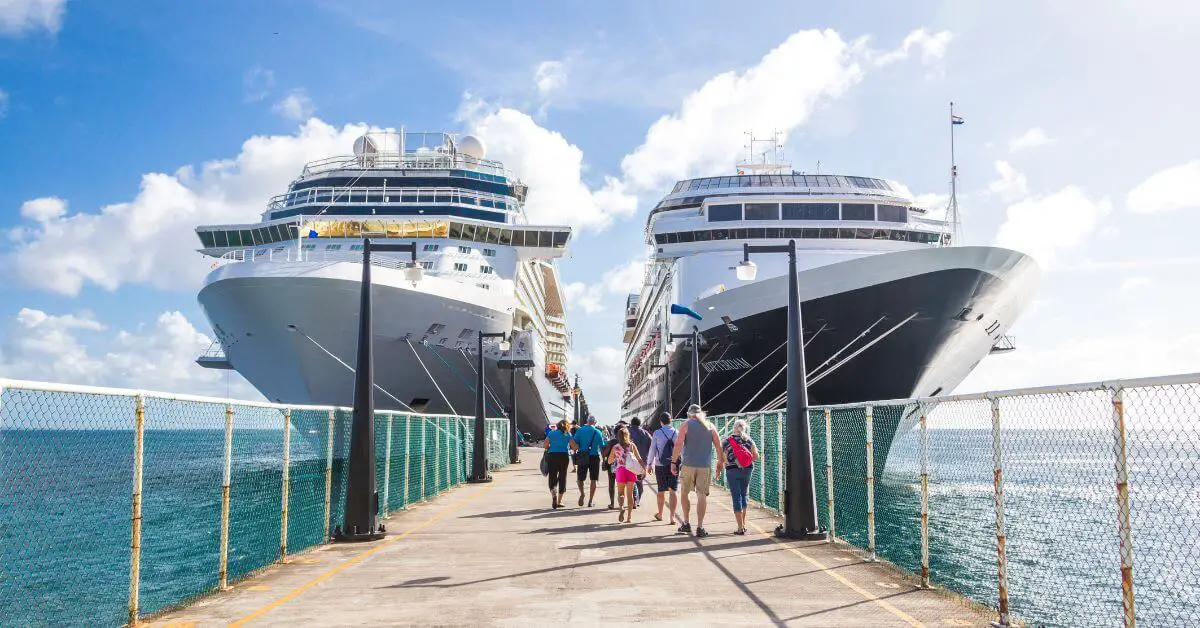
Have you ever wondered what sets a boat apart from a ship? While these terms are often used interchangeably, the two have distinct differences. In this article, we will explore the unique characteristics of boats and ships, shedding light on the nautical terminology and clearing up any confusion. So, let’s dive in!
Definition of Ships and Boats
What is a boat.
A boat can be defined as a small to medium-sized watercraft that is primarily designed for domestic or recreational use. Boats are typically built with a smaller size and capacity compared to ships. They can be made of various materials such as wood, fiberglass, or metal and are propelled using oars, paddles, sails, or engines.
Boats are commonly used for activities like fishing, water skiing, leisure cruising, or transportation across smaller bodies of water like lakes, rivers, or coastal areas.
What is a Ship?
On the other hand, a ship is a larger, seafaring vessel designed to transport people, goods, or cargo across long distances or through the open sea. Ships are usually constructed with a much larger size, structure, and capacity than boats.
They are often made of stronger materials like steel or aluminum and are equipped with advanced navigational systems, communication devices, and machinery.
Boat vs Ship: What’s the Difference Between a Ship and a Boat
The official US Naval Education and Training Command guidelines state that you can carry a boat on a ship, but you can’t carry a ship on a boat. Generally speaking, this means that if a craft is large enough to carry its lifeboats or dinghies, it’s considered a ship. Here are some differences between ships and boats:
1. Large Vessel vs Small Vessel
One of the primary factors differentiating boats from ships is their size. Generally, boats are smaller in scale compared to ships. While no specific measurement defines the threshold between the two, the rule of thumb is that a vessel under 197 feet (60 meters) in length is considered a boat (or yacht), and anything larger is a ship. Generally speaking, a ship is a large vessel, and a boat is a smaller one.
2. Purpose and Functionality
Another critical distinction lies in their purpose and functionality. Boats like fishing, leisure cruising, or water sports are designed for personal or recreational use. They are typically seen near coastlines, lakes, or rivers and are often transported on trailers.
On the other hand, ships are mainly used for commercial purposes, transporting cargo or passengers across large bodies of water, including oceans. Ships are built to withstand rough sea conditions and stay at sea for extended periods.
3. Construction and Design
Regarding construction and design, boats and ships have notable differences. Boats often use lightweight materials like fiberglass, aluminum, or wood. They usually have a simple hull structure designed to navigate in calm waters.
Ships, however, are constructed with more robust materials such as steel. Their complex hull design enables them to withstand rough waves and challenging sea conditions.
4. Navigational Capabilities
Boats and ships also vary in terms of their navigational capabilities. Boats generally have a more straightforward navigation system, often consisting of basic instruments like a compass, GPS, and depth finder. They rely on chart reading and local navigational aids for their journeys.
Ships, on the other hand, are equipped with advanced navigation systems such as radar, sonar, and sophisticated GPS technology. They also have onboard communication systems to maintain contact with other vessels and marine authorities.
5. Crew Size and Accommodation
Due to their size and purpose, boats and ships also differ regarding crew size and accommodation facilities. Boats often have a smaller crew, typically limited to a few individuals, and may need dedicated sleeping quarters or extensive amenities.
Ships, on the contrary, may have a large permanent crew consisting of deckhands, engineers, officers, and catering staff. They offer cabins, dining areas, recreational spaces, and medical facilities to support crew members during long voyages.
Regarding power, the difference between a boat and a ship is primarily related to their propulsion systems and capabilities. Here are some key points that differentiate boats and ships in terms of power:
- Boats generally have a smaller power capacity compared to ships.
- Engines, such as inboard or outboard motors and gasoline or diesel engines, commonly power them.
- Boats may also utilize sail power, such as on sailboats or yachts.
- The power of boats is typically suitable for shorter distances and recreational purposes.
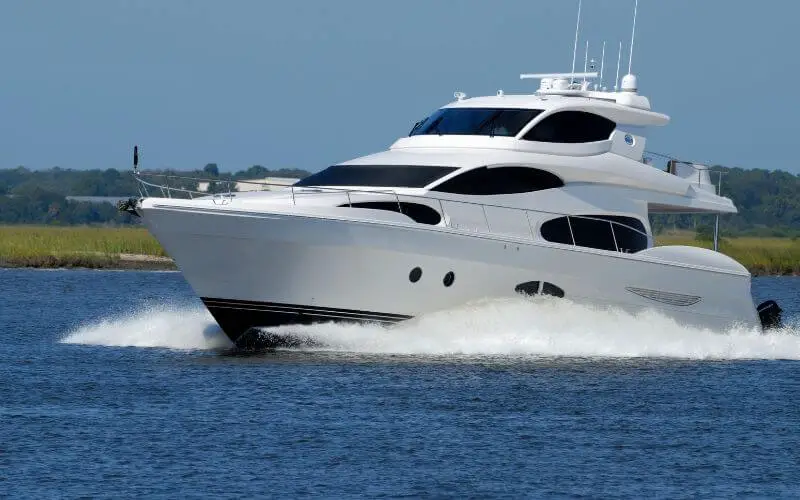
- Ships have a larger power capacity to meet the demands of their size and intended purpose.
- They are usually propelled by more powerful engines, such as diesel engines or gas turbines.
- Ships may have multiple engines and propellers , enabling them to achieve higher speeds and navigate over longer distances.
- The ships’ power allows them to transport goods and passengers or perform specific tasks like deep-sea exploration or military operations.
Note : It’s important to note that a vessel’s power can vary significantly within both the boat and ship categories. Depending on their specific design and purpose, there are fast, high-powered boats and slower, lower-powered ships.
7. Where They Sail
In terms of where they sail, the difference between a boat and a ship lies in the typical areas or bodies of water where they operate. Here are some distinctions:
- Boats are generally designed and used for sailing in inland waters, such as lakes, rivers, canals, and bays.
- They are often suitable for coastal areas and may venture far from shore.
- Boats are commonly used for recreational purposes, such as fishing, water skiing, leisurely cruising, or personal transportation on smaller bodies of water.
- Ships are designed and built to sail in larger bodies of water, such as oceans, seas, and major waterways.
- They are capable of long-distance voyages and international travel.
- Ships often operate on established shipping routes, connecting various ports and harbors worldwide.
- Different types of ships serve specific purposes, such as container ships transporting goods or cruise ships carrying passengers on vacation.
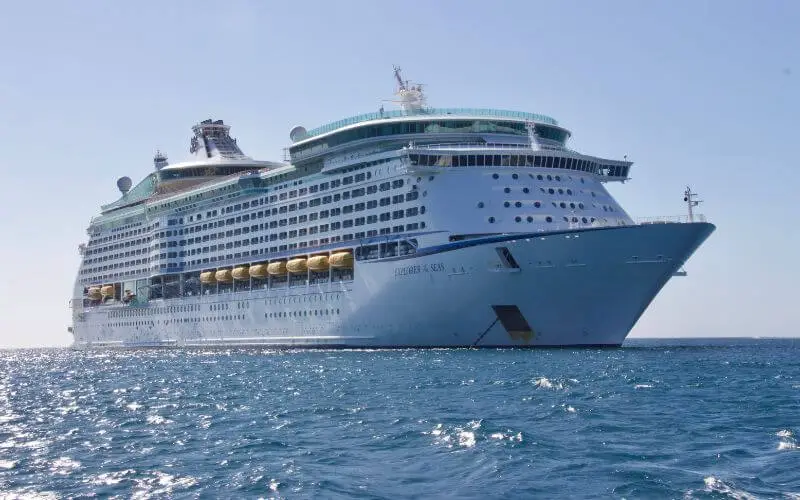
8. Vessel Tonnage
Ships typically have a higher tonnage as they are designed to carry a substantial amount of cargo or passengers. For example, cruise ships can have a large passenger capacity, often carrying thousands of passengers, while cargo ships can transport significant amounts of goods. A boat could never compete with the cargo capacity of a cargo ship.
On the other hand, boats usually have lower tonnage and are designed for more specific purposes, such as recreational boating or shorter-distance transportation.
9. Legal and Regulatory Requirements
Lastly, boats and ships are subjected to different legal and regulatory requirements. Depending on their size and purpose, boats often have fewer regulations to adhere to, primarily if they are utilized for personal use.
Ships in commercial operations are subject to strict safety standards and international conventions established by maritime organizations. These regulations include crew qualifications, safety equipment, communication systems, pollution control, and more.
Types of Boats and Ships
Types of boats.
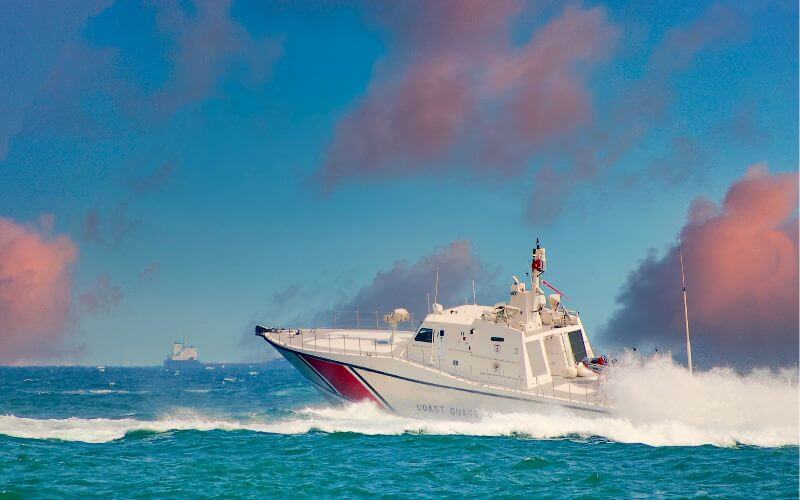
There are various types of boats , and they can be differentiated based on their size, purpose, and design. Below are some of the most commonly used types of boats:
1. Fishing Boats: These are boats primarily designed for fishing. They can be small or large, powered by engines or sails, and have features like fishing rods, storage lockers for gear, live well for fish, and fish finders.
2. Ski Boats: These are boats designed for water skiing, wakeboarding, or other similar activities. They usually have a powerful engine and a pointed hull to create higher wakes and are equipped with mirrors, towers, and ballast bags to help skiers perform stunts.
3. Pontoon Boats : They have a flat, stable, and rectangular-shaped deck on two or three pontoons (pressurized tubes). They offer ample deck space and seating for multiple people and can be used for entertainment, sunbathing, or simple cruising.
4. Personal Watercrafts: They are compact, motorized vehicles, often called jet skis. These boats can carry one to three people and are designed for speed, performing tricks and maneuvers at sea.
5. Deck Boats: They have an expansive deck with more deck space, seating capacity, shade protection, and feature amenities like a kitchenette, bathroom, and onboard entertainment systems.
6. Kayaks and Canoes: They are simple paddle boats designed for one or two passengers. They are lightweight, easy to maneuver, and can navigate narrow waterways or rapids.
7. Sailboats: These are boats propelled by the wind. They come in various sizes and designs, from small ones for recreational purposes to large ones for transoceanic travel. Some have only one sail, while others have many sails to harness the wind effectively.
These are just some of the most popular types of boats with their respective characteristics. However, the list of boats can go much longer depending on their intended use, design, and location.
Related Article: Different Types of Boats | Your Guide to Boat Types
Types of Ships
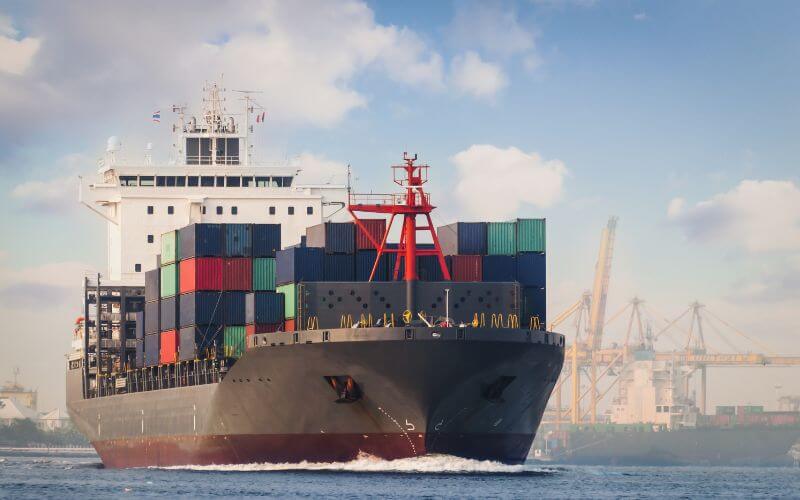
Ships can be classified into various types based on their intended purpose and design. Here are some common types of ships:
1. Container Ships : These ships are specifically designed to transport large quantities of containers efficiently. They have specialized container holds and handling equipment.
2. Bulk Carriers : Bulk carriers transport unpackaged cargo such as grains, coal, or ore. They have large cargo holds and equipment for efficient loading and unloading.
3. Tanker Ships : Tankers are designed to transport liquid cargo, such as crude oil, petroleum products, or chemicals. They have specialized storage tanks and pumping systems.
4. Passenger Ships : These ships are designed to carry passengers for travel, tourism, or entertainment purposes. They can range from small cruise ships to large ocean liners.
5. Naval Ships : Naval ships are used by navies for various purposes, including warfare, defense, and patrol. They can include aircraft carriers, destroyers, frigates, submarines, and more.
6. Offshore Ships : Offshore ships are used for various activities in offshore oil and gas operations, such as supply and support, diving, construction, or accommodation.
7. Special Purpose Ships : These ships are designed to serve specific purposes, such as research vessels, icebreakers, fire-fighting ships, or salvage vessels.
It’s important to note that these are just a few examples, and many other types of ships are used for different purposes. The ships’ classification can vary depending on their specific characteristics and functions.
Related Article: Different Types of Ships: Insights into Various Ship Types
Frequently Asked Questions
Is a cruise ship a boat.
A cruise ship is generally considered a ship rather than a boat. Cruise ships are large passenger vessels designed for extended travel and entertainment. They are typically larger than most boats and have amenities like dining halls, entertainment venues, swimming pools, and more to provide a comfortable and memorable vacation experience.
Cruise ships can accommodate thousands of passengers and crew members, making them much larger than most boats and small watercraft. They are equipped with advanced technology and safety mechanisms such as stabilizers , navigation systems, and life-saving equipment, allowing for safe and efficient voyages over long distances and weather conditions.
The bottom line is that you should never refer to a cruise ship as a boat if it carries travelers on the ocean for vacation.
Is a Submarine a Boat or a Ship?
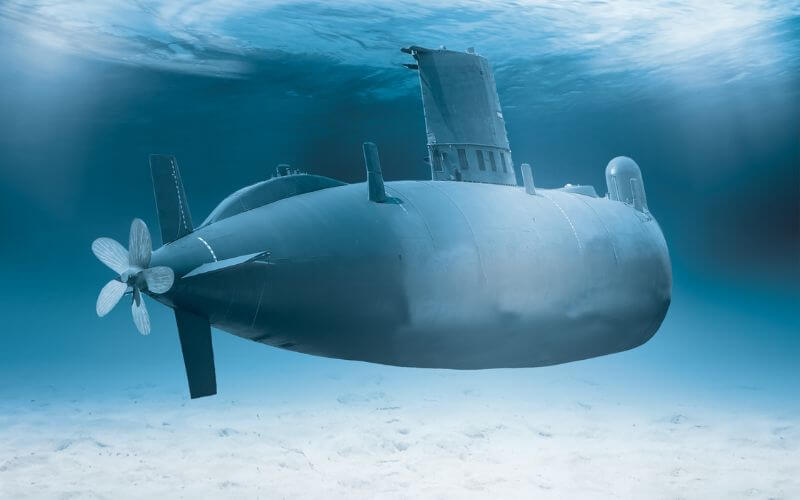
A submarine can be considered a type of watercraft since it is designed to navigate underwater using a self-contained power source and other equipment. However, submarines are often classified as a type of ship because of their size, mission capabilities, and construction materials.
Submarines are specialized vessels used in naval applications for various purposes such as reconnaissance, surveillance, or warfare. They are generally larger and equipped with advanced technology and systems like propulsion, weapons, communication, and navigation, similar to other ships.
Therefore, a submarine can be considered both a boat and a ship, depending on the perspective and classification system used.
Can the Number of masts on the Vessel be used to Differentiate Between a Boat and a Ship?
The distinction between a boat and a ship based on the number of masts can be blurry and vary depending on different sources and interpretations. In general, the number of masts alone is not a defining factor for determining whether a vessel is a boat or a ship.
Traditionally, a boat was considered to have a single mast, whereas a ship was defined as having multiple masts. However, this definition needs to be consistently applied, and the distinction between boats and ships relies on other factors, such as size, function, and seaworthiness.
What is the Difference Between a Sailing Ship and a Sailboat?
A sailing ship and a sailboat are different types of vessels propelled by wind using sails, but they differ in size, purpose, and design.
Depending on size, a sailboat, also known as a sailing dinghy, boat, or yacht, is generally a smaller vessel designed for recreational purposes. Sailboats can range in size from lightweight dinghies like the Optimist dinghy to larger yachts. They are typically used for leisurely sailing, racing, or cruising. Depending on their design, sailors often have single masts and various rigging configurations, such as sloop, cutter, or ketch.
On the other hand, a sailing ship refers to a larger vessel used for commercial, military, or historical purposes. Sailing ships are often associated with historical eras, such as the Age of Exploration or the tall ship era. Sailing ships historically transported goods and people or engaged in naval warfare.
In conclusion, while boats and ships seem interchangeable, they have distinct differences based on size, purpose, construction, navigational capabilities, crew size, power, where they sail, and legal requirements.
Basically, a ship can carry a boat, but a boat cannot carry a ship. While no specific tonnage threshold clearly differentiates the two, boats are generally smaller and operate in inland waters or coastal areas, often for recreational purposes.
Ships, on the other hand, are larger, have greater power capacity, and are designed for long-distance voyages across oceans and seas. They serve various purposes, such as transporting goods or passengers and navigating established shipping routes worldwide.
While these differences provide a general framework, it’s worth noting that there can be variations and exceptions within each category. The line between boats and ships can sometimes blur, with vessels possessing characteristics of both. Additionally, classifications can differ based on specific conventions or regulations.
Boat Collisions: How to Avoid Collisions with Another Boat
Boating can be a fun and relaxing activity that many individuals enjoy. Whether cruising along the coastline, fishing with friends,
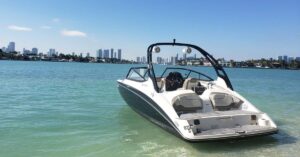
What is a Jet Boat? Propulsion System, Types, Pros and Cons
Jet boats are thrilling, high-speed watercraft making waves in the boating industry. Unlike conventional boats, a jet boat uses powerful
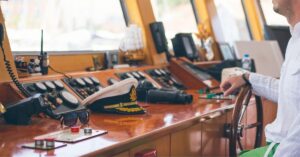
How to Steer a Boat: Mastering the Art of Boat Steering
If you’re ready to embark on a boating adventure and take hold of the helm, it’s time to dive into
Workshop Insider Newsletter
Be a workshop insider get our latest collection of news and announcements delivered to your inbox..., latest articles.
- September 12, 2023
The Ultimate Guide to Pipeliner Welding Hoods: Features, Benefits, Buying Guide, and Best Practices
- Welding Helmets Buying Guides
- September 11, 2023
- September 10, 2023
J-B Weld Removal: How to Remove JB Weld from Metal, Plastic, Skin, and More!
- Mechanical Engineering , Welding Technology
- August 19, 2023
- August 17, 2023
What are Bellows on a Boat: Everything You Need to Know
- August 16, 2023

- Privacy Policy
- Terms of Use
- Affiliate Disclosure

Yacht vs Cruise Ship: Key Differences Explained
Many travelers look at luxury yacht rentals and cruise ships when planning a vacation at sea. But there are some major distinctions between these two options. Understanding the key differences can help you choose the best one to suit your needs and expectations.
Size and Capacity
The most obvious difference is size and guest capacity. Cruise ships are massive, housing 2000-6000 passengers.
Even small ships carry 600+ people. In contrast, chartered yachts max out around 12 guests, with typical capacities of 6-10. The intimate scale ensures an exclusive escape.
Itineraries and Flexibility
Cruises sail along fixed routes and strict schedules, whereas yacht charters offer total itinerary flexibility. Craft your own custom route with a captain. Spend more time in spots you love and bypass others. The only fixed elements are your start/end ports.
Onboard Experience
The onboard ambiance varies dramatically between the two. Cruise ships feel like floating cities with crowds everywhere. You’ll share amenities with thousands of fellow passengers. Chartered yachts provide a private, peaceful retreat catered to you. No queues or sharing.
Activities and Entertainment
Both offer plenty of amenities, but the vibe is different. Cruises offer fun activities like casinos and shows, while yachts provide relaxation and adventures like snorkeling and fishing. The choice depends on your interests.
Service and Cuisine
With thousands of guests, cruise staff and dining cannot provide truly personalized service. You get more staff interaction on a yacht, including a captain dedicated to your charter. Included in the experience is fine dining with customized menus and premium alcohol.
For an exclusive getaway on your terms, a private yacht charter reigns supreme. But mass market cruises suit travelers who enjoy crowds and scripted entertainment. Evaluate your priorities to choose the best seafaring vacation.
Booking and Costs
Booking a cruise is relatively simple through major cruise lines or agencies, while yacht charters require researching reputable brokers and charter companies, of which there are many. Cruise fares per person are lower, but a fully crewed yacht divided among guests can still be competitive. Keep costs variable by booking a bareboat yacht charter.
Destinations and Departure Ports
Cruise ships certainly provide a wide variety of itineraries, but their large size limits them to major cruise ports. Yachts can access small coves, secluded islands, and exotic locales that mega-ships can’t reach. Many more departure ports are accessible for yacht charters too.
Onboard Accommodations
Staterooms on a cruise provide basic comfort, often with an ocean view. Yachts feature lavish staterooms and master suites with hotel-style amenities. You’ll get complete privacy, often with en-suite bathrooms. Some large charter yachts rival small boutique hotels in luxury. .
Health and Safety
Mass gatherings on cruises can enable the rapid spread of illnesses like COVID or norovirus. Yachts provide isolation from crowds and allow immunocompromised guests to vacation safely. Strict protocols keep private yachts disinfected, and both options mandate safety drills and procedures.

Read Our Billfish Policy

Our Crews Prefer

- Skip to main content
- Keyboard shortcuts for audio player
- Your Health
- Treatments & Tests
- Health Inc.
- Public Health
Bill Of The Month
He fell ill on a cruise. before he boarded the rescue boat, they handed him the bill.
Bram Sable-Smith

On the last full day of a Bahamas excursion, Vincent Wasney had three epileptic seizures. While being evacuated, he received a bill for expenses incurred during the cruise. Kristen Norman for KFF Health News hide caption
On the last full day of a Bahamas excursion, Vincent Wasney had three epileptic seizures. While being evacuated, he received a bill for expenses incurred during the cruise.
Vincent Wasney and his fiancée, Sarah Eberlein, had never visited the ocean. They'd never even been on a plane. But when they bought their first home in Saginaw, Michigan, in 2018, their real estate agent gifted them tickets for a Royal Caribbean cruise.
After two years of delays due to the coronavirus pandemic, they set sail in December 2022.
The couple chose a cruise destined for the Bahamas in part because it included a trip to CocoCay, a private island accessible to Royal Caribbean passengers that featured a water park, balloon rides, and an excursion swimming with pigs.
Bill of the Month is a crowdsourced investigation by KFF Health News and NPR that dissects and explains medical bills. Do you have an interesting medical bill you want to share with us? Tell us about it !
It was on that day on CocoCay when Wasney, 31, started feeling off, he said.
The next morning, as the couple made plans in their cabin for the last full day of the trip, Wasney made a pained noise. Eberlein saw him having a seizure in bed, with blood coming out of his mouth from biting his tongue. She opened their door to find help and happened upon another guest, who roused his wife, an emergency room physician.
Wasney was able to climb into a wheelchair brought by the ship's medical crew to take him down to the medical facility, where he was given anticonvulsants and fluids and monitored before being released.
Vincent had had seizures in the past, starting about ten years ago, but it had been a while since his last one. Imaging back then showed no tumors, and doctors concluded he was likely epileptic, he said. He took medicine initially, but after two years without another seizure, he said his doctors took him off the medicine to avoid liver damage.
Wasney had a second seizure on the ship a few hours later, back in his cabin. This time he stopped breathing, and Eberlein remembered his lips being so purple, they almost looked black. Again, she ran to find help but, in her haste, locked herself out. By the time the ship's medical team got into the cabin, Wasney was breathing again but had broken blood vessels along his chest and neck that he later said resembled tiger stripes.
Wasney was in the ship's medical center when he had a third seizure — a grand mal, which typically causes a loss of consciousness and violent muscle contractions. By then, the ship was close enough to port that Wasney could be evacuated by rescue boat. He was put on a stretcher to be lowered by ropes off the side of the ship, with Eberlein climbing down a rope ladder to join him.
But before they disembarked, the bill came.
The patient: Vincent Wasney, 31, who was uninsured at the time.
Medical services: General and enhanced observation, a blood test, anticonvulsant medicine, and a fee for services performed outside the medical facility.
Service provider: Independence of the Seas Medical Center, the on-ship medical facility on the cruise ship operated by Royal Caribbean International .
Total bill: $2,500.22.

Shots - Health News
A mom's $97,000 question: how was an air-ambulance ride not medically necessary.
What gives: As part of Royal Caribbean's guest terms , cruise passengers "agree to pay in full" all expenses incurred on board by the end of the cruise, including those related to medical care. In addition, Royal Caribbean does not accept "land-based" health insurance plans.
Wasney said he was surprised to learn that, along with other charges like wireless internet, Royal Caribbean required he pay his medical bills before exiting the ship — even though he was being evacuated urgently.
"Are we being held hostage at this point?" Eberlein remembered asking. "Because, obviously, if he's had three seizures in 10 hours, it's an issue."
Wasney said he has little memory of being on the ship after his first seizure — seizures often leave victims groggy and disoriented for a few hours afterward.
But he certainly remembers being shown a bill, the bulk of which was the $2,500.22 in medical charges, while waiting for the rescue boat.
Still groggy, Wasney recalled saying he couldn't afford that and a cruise employee responding: "How much can you pay?"
They drained their bank accounts, including money saved for their next house payment, and maxed out Wasney's credit card but were still about $1,000 short, he said.
Ultimately, they were allowed to leave the ship. He later learned his card was overdrafted to cover the shortfall, he said.
Royal Caribbean International did not respond to multiple inquiries from KFF Health News.
Once on land, in Florida, Wasney was taken by ambulance to the emergency room at Broward Health Medical Center in Fort Lauderdale, where he incurred thousands of dollars more in medical expenses.
He still isn't entirely sure what caused the seizures.
On the ship he was told it could have been extreme dehydration — and he said he does remember being extra thirsty on CocoCay. He also has mused whether trying escargot for the first time the night before could have played a role. Eberlein's mother is convinced the episode was connected to swimming with pigs, he said. And not to be discounted, Eberlein accidentally broke a pocket mirror three days before their trip.
Wasney, who works in a stone shop, was uninsured when they set sail. He said that one month before they embarked on their voyage, he finally felt he could afford the health plan offered through his employer and signed up, but the plan didn't start until January 2023, after their return.
They also lacked travel insurance. As inexperienced travelers, Wasney said, they thought it was for lost luggage and canceled trips, not unexpected medical expenses. And because the cruise was a gift, they were never prompted to buy coverage, which often happens when tickets are purchased.

When a quick telehealth visit yields multiple surprises beyond a big bill
The resolution: Wasney said the couple returned to Saginaw with essentially no money in their bank account, several thousand dollars of medical debt, and no idea how they would cover their mortgage payment. Because he was uninsured at the time of the cruise, Wasney did not try to collect reimbursement for the cruise bill from his new health plan when his coverage began weeks later.
The couple set up payment plans to cover the medical bills for Wasney's care after leaving the ship: one each with two doctors he saw at Broward Health, who billed separately from the hospital, and one with the ambulance company. He also made payments on a bill with Broward Health itself. Those plans do not charge interest.
But Broward Health said Wasney missed two payments to the hospital, and that bill was ultimately sent to collections.
In a statement, Broward Health spokesperson Nina Levine said Wasney's bill was reduced by 73% because he was uninsured.
"We do everything in our power to provide the best care with the least financial impact, but also cannot stress enough the importance of taking advantage of private and Affordable Care Act health insurance plans, as well as travel insurance, to lower risks associated with unplanned medical issues," she said.
The couple was able to make their house payment with $2,690 they raised through a GoFundMe campaign that Wasney set up. Wasney said a lot of that help came from family as well as friends he met playing disc golf, a sport he picked up during the pandemic.
"A bunch of people came through for us," Wasney said, still moved to tears by the generosity. "But there's still the hospital bill."
The takeaway: Billing practices differ by cruise line, but Joe Scott , chair of the cruise ship medicine section of the American College of Emergency Physicians, said medical charges are typically added to a cruise passenger's onboard account, which must be paid before leaving the ship. Individuals can then submit receipts to their insurers for possible reimbursement.
He recommended that those planning to take a cruise purchase travel insurance that specifically covers their trips. "This will facilitate reimbursement if they do incur charges and potentially cover a costly medical evacuation if needed," Scott said.
Royal Caribbean suggests that passengers who receive onboard care submit their paid bills to their health insurer for possible reimbursement. Many health plans do not cover medical services received on cruise ships, however. Medicare will sometimes cover medically necessary health care services on cruise ships, but not if the ship is more than six hours away from a U.S. port.
Travel insurance can be designed to address lots of out-of-town mishaps, like lost baggage or even transportation and lodging for a loved one to visit if a traveler is hospitalized.
Travel medical insurance, as well as plans that offer "emergency evacuation and repatriation," are two types that can specifically assist with medical emergencies. Such plans can be purchased individually. Credit cards may offer travel medical insurance among their benefits, as well.
But travel insurance plans come with limitations. For instance, they may not cover care associated with preexisting conditions or what the plans consider "risky" activities, such as rock climbing. Some plans also require that travelers file first with their primary health insurance before seeking reimbursement from travel insurance.
As with other insurance, be sure to read the fine print and understand how reimbursement works.
Wasney said that's what they plan to do before their next Royal Caribbean cruise. They'd like to go back to the Bahamas on basically the same trip, he said — there's a lot about CocoCay they didn't get to explore.
Emmarie Huetteman of KFF Health News edited the digital story, and Taunya English of KFF Health News edited the audio story. NPR's Will Stone edited the audio and digital story.
KFF Health News , formerly known as Kaiser Health News (KHN), is a national newsroom that produces in-depth journalism about health issues and is one of the core operating programs at KFF — the independent source for health policy research, polling, and journalism.
- medical bills
- broward health
- travel insurance
- cruise ship
- royal caribbean

10 Key Differences Between a Modern Cruise Ships vs Titanic
W ho wins in the debate: modern cruise ship vs titanic? Most people associate the Titanic with a gigantic cruise ship , but even though it was the biggest passenger liner in the world in 1912, the Titanic was actually much smaller than modern-day cruise ships. Modern cruise ships are often 1,000 feet long; at 882 feet long, the Titanic ship was dwarfed by larger ships by height and beam.
The largest cruise ship in the world, Royal Caribbean ‘s Icon of the Seas, with a gross tonnage (GT) of 248,663, sailed from the US port of Miami on January 27, 2024. Advancements in technology, safety regulations, and design have transformed the cruise industry and today’s modern cruise ships offer unparalleled luxury, comfort, and safety features, making them vastly different from the ill-fated Titanic. However, there continues to be a debate about the modern cruise ship vs the Titanic. Let’s break the argument down: here are some differences between a current cruise ship and the Titanic in case your definition of a cruise ship is based on a ship that sailed more than a century ago.
Modern Cruise Ships vs The Titanic
Size and capacity.
The Titanic was considered the largest and most luxurious ship of its time, measuring about 882 feet in length and accommodating approximately 2,200 passengers and crew. In contrast, modern cruise ships are much larger, with some exceeding 1,000 feet in length and carrying over 6,000 passengers and crew members. These massive vessels feature multiple decks, amenities, and entertainment options to cater to a diverse range of travelers.
Safety Features
Following the tragic sinking of the Titanic, stringent safety regulations were implemented to prevent similar disasters. Modern cruise ships are equipped with state-of-the-art safety features, including advanced navigation systems, radar technology, and satellite communications for real-time monitoring and emergency response. Additionally, modern ships undergo rigorous safety drills and inspections to ensure compliance with international maritime standards.
Technology and Innovation
Advancements in technology have revolutionized the cruise industry, enhancing the onboard experience for passengers. Modern cruise ships feature amenities such as onboard Wi-Fi, interactive touch-screen displays, digital key systems for cabin access, and smartphone apps for booking excursions and dining reservations. High-speed internet connectivity allows passengers to stay connected with loved ones and share their travel experiences in real time.
Comfort and Luxury
While the Titanic was celebrated for its opulent interiors and lavish amenities, modern cruise ships set a new standard for luxury and comfort. From spacious staterooms and suites with private balconies to gourmet dining options and world-class entertainment, today’s cruise ships offer unparalleled levels of indulgence and relaxation. Passengers can enjoy spa treatments, fitness centers, swimming pools, theaters, casinos, and more, ensuring a memorable and enriching vacation experience.
Environmental Sustainability
In recent years, the cruise industry has made significant strides in promoting environmental sustainability and reducing its carbon footprint . Modern cruise ships are designed with eco-friendly features such as advanced wastewater treatment systems, energy-efficient propulsion systems, and LED lighting. Cruise lines also implement recycling programs, shore power connections, and alternative fuel sources to minimize environmental impact and preserve marine ecosystems.
Global Accessibility
Unlike the Titanic, which primarily operated transatlantic voyages between Europe and North America, modern cruise ships offer global itineraries spanning all seven continents. Passengers can embark on cruises to exotic destinations such as the Caribbean, Mediterranean, Alaska, South Pacific , and even Antarctica. With a wide range of destinations and shore excursions available, cruise travel has become more accessible and inclusive than ever before.
Dining Options
While the Titanic offered extravagant dining experiences in its grand dining saloons, modern cruise ships take culinary offerings to new heights. Passengers can choose from a variety of dining options, including gourmet restaurants , casual eateries, specialty cuisine venues, and 24-hour room service. Many cruise lines also accommodate dietary restrictions and preferences, ensuring that all guests can enjoy delicious meals prepared by world-class chefs.
Entertainment and Activities
From Broadway-style shows and live music performances to comedy clubs and themed parties, modern cruise ships offer a diverse array of entertainment options to suit every taste and age group. Passengers can participate in onboard activities such as cooking classes, dance lessons, fitness programs , water sports, and enrichment lectures. With something for everyone, boredom is simply not an option on today’s cruise ships.
Health and Wellness Facilities
In addition to traditional spa services, modern cruise ships feature comprehensive health and wellness facilities designed to promote relaxation, rejuvenation, and overall well-being. Passengers can unwind in saunas, steam rooms, and hot tubs, indulge in massages and beauty treatments, and participate in yoga and meditation classes. Fitness enthusiasts can take advantage of fully equipped gyms, jogging tracks, and group exercise sessions to stay active while at sea.
Accessibility and Inclusivity
One of the most significant differences between the Titanic and modern cruise ships is the focus on accessibility and inclusivity. Today’s cruise ships are designed to accommodate passengers with disabilities, offering wheelchair-accessible cabins, public areas, and amenities. Cruise lines also provide specialized services and assistance to ensure that all guests can enjoy a comfortable and memorable vacation experience, regardless of their physical abilities.
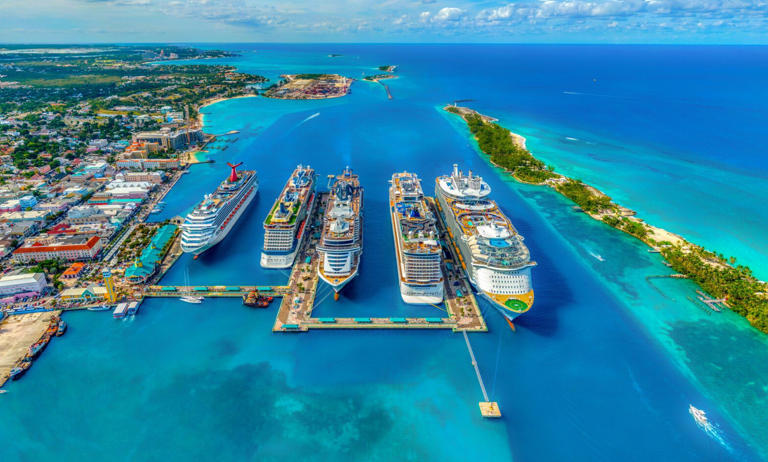
- My View My View
- Following Following
- Saved Saved
Two dead, five missing after boat collision on Danube in Hungary
- Medium Text
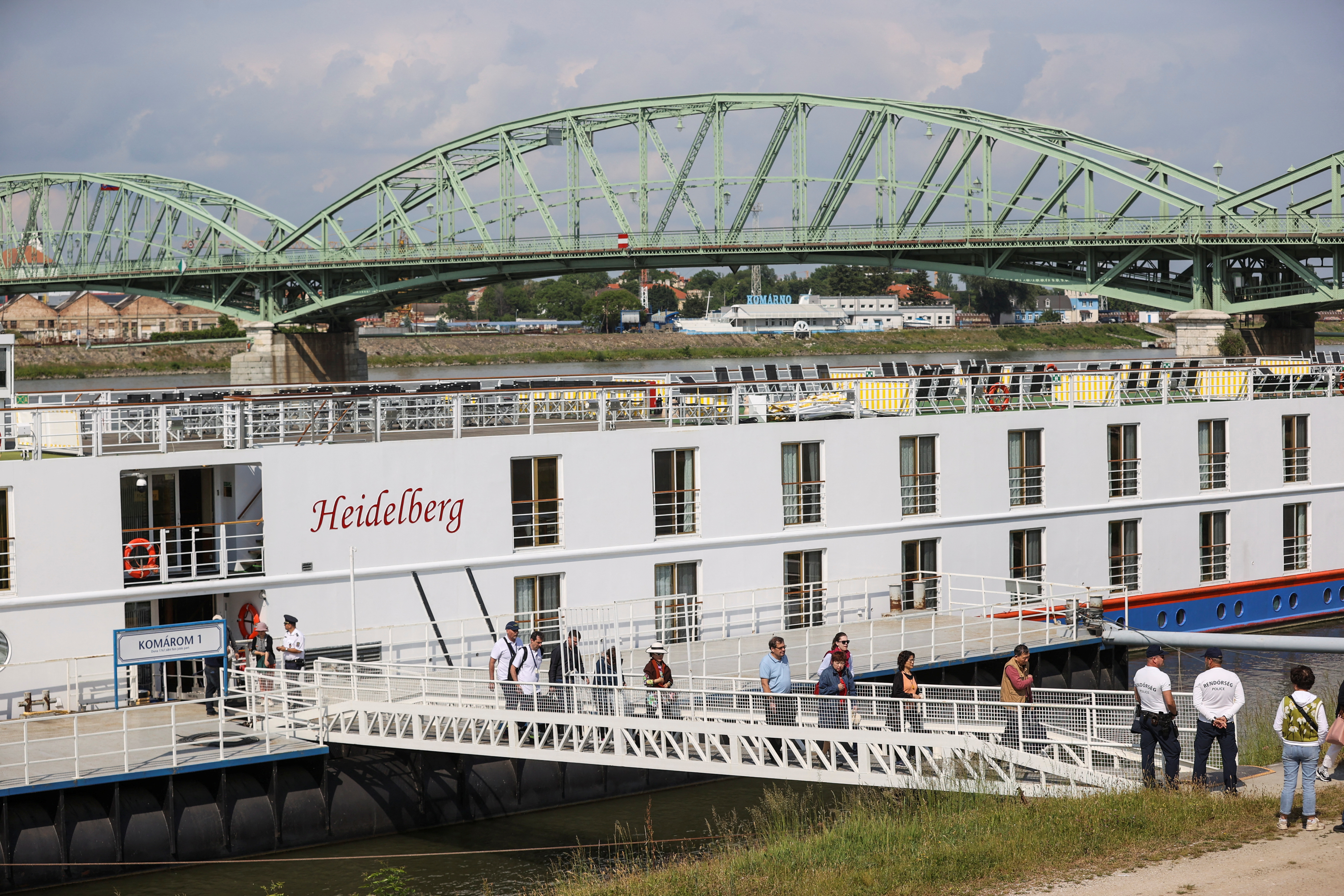
- Small motor boat collides with cruise ship -police
- 95 personnel, 25 ships deployed to search for survivors
- Reuters footage shows some damage to bow of cruise ship
Sign up here.
Reporting by Gergely Szakacs amd Krisztina Fenyo Editing by David Goodman and Susan Fenton
Our Standards: The Thomson Reuters Trust Principles. New Tab , opens new tab

Thomson Reuters
Gergely reports on central European economics, central banking and government policy, with content usually appearing on the Macro Matters, Markets, Business and World sections of the website. He has nearly two decades' worth of experience in financial journalism at Reuters and holds advanced degrees in English and Communication.

World Chevron

World Court ruling shows consensus to end Israel's war in Gaza, Palestinian Authority says
The Palestinian Authority welcomed the World Court's order on Friday for Israel to halt its operations in the city of Rafah, saying it represents an international consensus to end the war in Gaza, presidential spokesman Nabil Abu Rudeineh told Reuters.

Dali ship refloated two months after Baltimore bridge collapse
Recovery teams have refloated the Dali cargo ship two months after it crashed into Baltimore's Francis Scott Key bridge.
The removal of the Dali marked a significant step in the Port of Baltimore's recovery from the boat's collision with one of the bridge's support pillars.
The bridge's consequent collapse killed six road workers and hindered traffic through the busiest port for car shipments in the US.
The huge cargo vessel was pulled free of the main channel at high tide early on Monday local time where it had been stuck since March 26.
Its damaged bow was still covered with smashed shipping containers, fallen steel trusses and mangled concrete.
The extensive damage included a massive, gaping hole above the waterline on its starboard side.
Five tugboats slowly led it to a local marine terminal after a successful effort to make the container ship buoyant at about 6:40am EDT (8:40pm AEST), the US Army Corps of Engineers said on social media platform X.
It will spend several weeks getting temporary repairs at the same marine terminal it occupied before beginning its disastrous voyage, then move to a shipyard in Norfolk, Virginia for extensive repairs.
To refloat the Dali, crews released anchors and pumped out more than 1 million gallons of water that had kept the ship grounded and stable.
President Joe Biden praised the team that freed the ship from its weeks-long imprisonment under the bridge's wreckage in a post on X on Monday.
"It took the grit of workers and officials coming together to get this done," Mr Biden said. "That's Baltimore Strong."
Maryland Governor Wes Moore told NBC on Sunday that workers were on track to restore full access to the port this month.
Since the bridge collapse, authorities have opened four temporary channels to allow some shipping to resume.
Crews set off controlled explosions last week to allow them to remove a portion of the fallen bridge from the bow of the Dali, which had been pinning the boat in place.
That allowed salvage crews to haul away the twisted metal wreckage using cranes and barges, and free the boat for refloating and removal, the Corps of Engineers said.
Removing the hulking ship opened a new void in Baltimore's altered skyline, which lost an iconic landmark and a symbol of the city's proud maritime history.
Crews have already cleared thousands of tonnes of mangled steel that jutted up from the water's surface after the collapse.
The bodies of the six victims had been recovered from the underwater wreckage — all Latino immigrants who came to the US for job opportunities .
They were filling potholes on an overnight shift when the bridge was destroyed.
Federal investigators said in a preliminary report last week that the Dali had lost electrical power several times before crashing into the bridge as it was leaving the port.
The Dali experienced two electrical blackouts about 10 hours before leaving the Port of Baltimore on its way to Sri Lanka.
The crew later made changes to the ship's electrical configuration, switching to a transformer and breaker system that had previously been out of use for several months, according to the National Transportation Safety Board's preliminary report.
Two more blackouts left the Dali without propulsion, drifting off course just as it was approaching the Key Bridge.
By then, two tugboats that had guided the Dali out of port had peeled off — normal protocol, according to the report — but when the power went out, the tugs were too far away to help avert disaster.
The ship's 21 crew members, most of whom are from India, have not been allowed off the vessel since the collapse .
The Dali is managed by Synergy Marine Group and owned by Grace Ocean Private Ltd., both of Singapore.
Maryland state officials estimate it will cost $US1.7 to $US1.9 billion ($2.55 to $2.85 billion) to rebuild the bridge and anticipates completion by fall 2028.
- X (formerly Twitter)
Related Stories
Crew trapped on baltimore ship as investigation continues into power blackouts that caused bridge collapse.
'Surgical' demolition brings down largest remaining section of Baltimore bridge
Crews clear first pieces of Baltimore bridge as ship remains motionless
'He fought for his life': Survival tale emerges weeks after Baltimore Bridge collapse
It only took 30 seconds for Baltimore's largest bridge to collapse. Here's how the disaster unfolded
- Accidents and Emergency Incidents
- Disasters, Accidents and Emergency Incidents
- Government and Politics
- Marine Transport Industry
- Maritime Accidents and Incidents
- United States

IMAGES
VIDEO
COMMENTS
The typical maritime definition of a yacht is a private pleasure ship of at least 33 feet. As we stated at the outset, YachtWorld generally considers anything in the 35-40-foot range (or larger) a yacht. However, there are exceptions, ... Note: any vessel below Class B is referred to as a boat, hence the difference. ...
Ultimately it comes down to this: all three of them are boats, but yachts are fancier, larger, and used for recreation, and ships are even larger, used commercially or by the navy, and are meant to cross oceans. The dividing line is sometimes thin, but generally speaking, when it comes to boats vs. ships.vs. yachts you can go by the adage " I ...
Although this rule is less relevant today, it does come up frequently in maritime circles when discussing the difference between a ship and a boat. Bottom line. There's no hard-and-fast rule when it comes to determining whether a vessel is a ship or a boat. Generally, the most common ideas about this seem to revolve around size: tonnage, number ...
Their size and structure are built to handle long voyages across oceans and to carry substantial amounts of goods or people. A ship's design is often more utilitarian compared to the luxury and comfort-focused design of a yacht. 12. Another notable difference between a yacht and a ship is in the ownership and operation.
There are many nuances and subtle differences between water vessel types, but below are some of the main differences. In general, yachts are either sailing or motor vessels used for pleasure. Yachts are often luxurious and equipped with an overnight cabin. Boats can be either propelled sail or a motor and come in varying sizes.
What's the difference between a boat and a ship?. By definition, a boat is "a vessel for transport by water," "a small ship," or "a vessel of any size built for navigation of rivers or inland bodies of water." In casual use, the word boat is used to refer to any vehicle used to travel on the water—anything from a canoe to an ocean liner. ...
Technically speaking, a mode of water transport that weighs at least 500 tonnes or above is categorised as a ship. In comparison, boats are stipulated to be quite compact in their structural size and displacement. 2. Operational Areas. A major difference between ship and boat is that of their areas of operation.
The difference between the two broad categories is determined by one key factor. Gizmodo; ... The only distinction between a yacht and a ship is simple: It is the vessel's intended purpose. When ...
A ship is typically larger than a boat and can carry more cargo and passengers. Ships are also designed for longer journeys and can travel across oceans. Boats, on the other hand, are smaller and are generally used for shorter trips, such as fishing or pleasure boating. Another key difference between the two is their purpose.
A boat becomes a "ship" often once it's reached a specific size, which tends to be on the bigger side and suitable for sea travel. In most cases, ships serve as working vessels, such as transport or cruise liners. "Yachts" are also more substantial, but they're solely recreational vessels and often used for luxury purposes.
Definition. A boat is a watercraft of modest size designed to float or plane, to provide passage across water. A ship is a large vessel that floats on water. Types. unpowered boats, sail boats and motorboats. commercial vessels, naval ships, fishing vessels and pleasure craft.
Defining 'boat' seems to be stickier than 'yacht' or 'ship.'. We hear many captains referring to their 'boat,' irrespective of size, function, or fit-and-finish. Short of being deliberately confusing, it seems as though the word boat has become a colloquialism, pet phrase, or slang term for any floating object more complicated ...
We define ship in the following ways: "a large seagoing vessel," "a sailing vessel having a bowsprit and usually three masts each composed of a lower mast, a topmast, and a topgallant mast," and "boat (especially one propelled by power or sail)". Boat has a slightly narrower semantic range, including "a small vessel for travel on ...
Ships are Big - Boats are Small. For context, the simplest way to define the difference between ships and boats is that one is big and the other is smaller. The official US Naval Education and Training Command guidelines state that you can carry a boat on a ship, but you can't carry a ship on a boat. Generally speaking, this means that if a ...
Boat VS Ship: The Characteristics of Boats. Boats, by and large, are the modest workhorses of the nautical world. They come in a myriad of forms, from canoes and fishing skiffs to mid-sized cruisers. Typically, a boat is navigated by non-professional seafarers and is not designed for transoceanic journeys. Boats are commonly used for hobbies ...
There's a popular saying that goes "a ship can carry a boat but a boat can't carry a ship.". Another popular one is that a ship leans left when it turns right. A boat leans right when it turns right. According to some definitions a ship is a vessel weighing at least 500 tons.
Cargo and Passenger capacity. One of the biggest differentiators is that ships can carry a large amount of cargo or passengers. Like a cruise ship can easily carry a couple of thousand passengers. Boats in contrast carry low load and passengers. A ferry boat can carry hundreds of people but most of the boats dont.
A boat can use oars, sails, or motors, according to Marine Insight. But a ship has to use propulsion from larger engines. A boat can use propulsion engines, according to Marine Insight, but they won't be the size or power of what you'd find on a ship. Ships also tend to be built differently than boats because of where they operate.
One thing that sets a ship apart from a boat is size. According the U.S. Naval Institute, a boat, generally speaking, is small enough to be carried aboard a larger vessel, and a vessel large ...
6 ) Design and Construction. There are many constructional difference in boat vs ship; A ship is a sophisticated piece of machinery which require large compartments, robust design, heavy machinery, and complex construction. On the other hand, boats are simple, have smaller and less machinery and have simple but robust construction.
Generally, boats are smaller in scale compared to ships. While no specific measurement defines the threshold between the two, the rule of thumb is that a vessel under 197 feet (60 meters) in length is considered a boat (or yacht), and anything larger is a ship. Generally speaking, a ship is a large vessel, and a boat is a smaller one.
The most obvious difference is size and guest capacity. Cruise ships are massive, housing 2000-6000 passengers. Even small ships carry 600+ people. In contrast, chartered yachts max out around 12 guests, with typical capacities of 6-10. The intimate scale ensures an exclusive escape.
In intransitive terms the difference between ship and yacht is that ship is to embark on a ship while yacht is to sail, voyage, or race in a yacht. As nouns the difference between ship and yacht is that ship is a water-borne vessel generally larger than a boat while yacht is a slick and light ship for making pleasure trips or racing on water, having sails but often motor-powered.
Medical services: General and enhanced observation, a blood test, anticonvulsant medicine, and a fee for services performed outside the medical facility. Service provider: Independence of the Seas ...
Size and Capacity. The Titanic was considered the largest and most luxurious ship of its time, measuring about 882 feet in length and accommodating approximately 2,200 passengers and crew. In ...
After 55 days stuck in the Patapsco River, the Dali cargo ship was hauled away from the site of its catastrophic crash into the Francis Scott Key Bridge - a crucial step toward fully reopening ...
Two people were killed and five others were missing after a small motor boat collided with a cruise ship on the Danube River north of Budapest late on Saturday, Hungarian police said on Sunday.
Two people are dead and five are missing following a boat collision on the Danube River in Hungary. Hungarian police received a report late on Saturday night, local time, that a man had been found ...
Recovery teams have refloated the Dali cargo ship two months after it crashed into Baltimore's Francis Scott Key bridge. The removal of the Dali marked a significant step in the Port of Baltimore ...
Almost two months after its devastating collision with a Baltimore bridge, the trapped cargo ship Dali will refloat and travel to the Baltimore marine terminal on Monday morning, officials said.